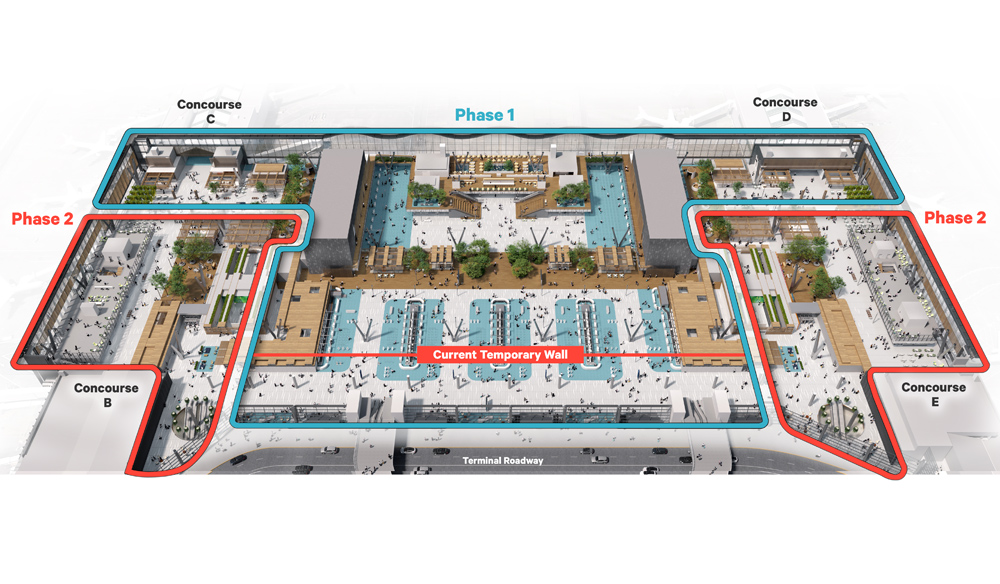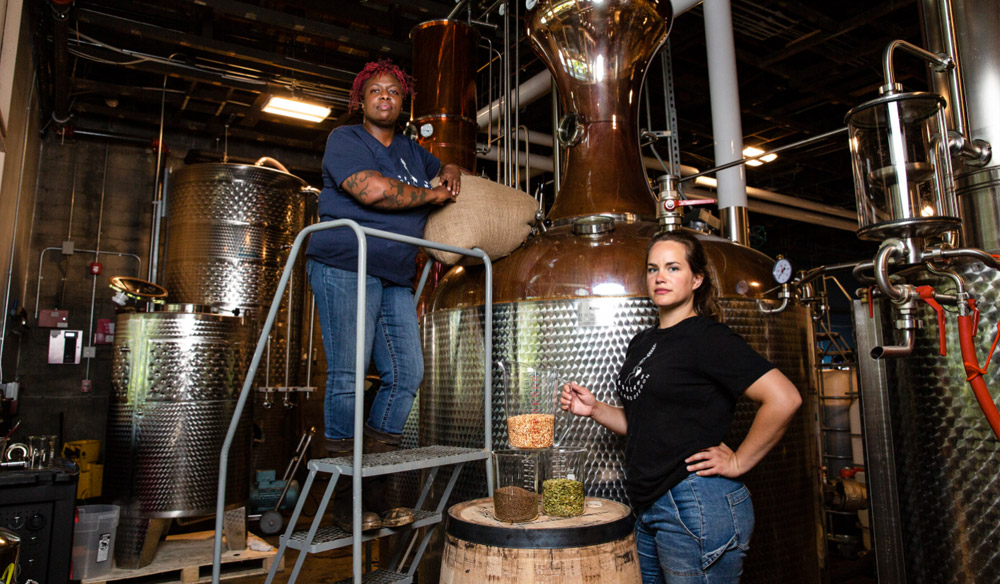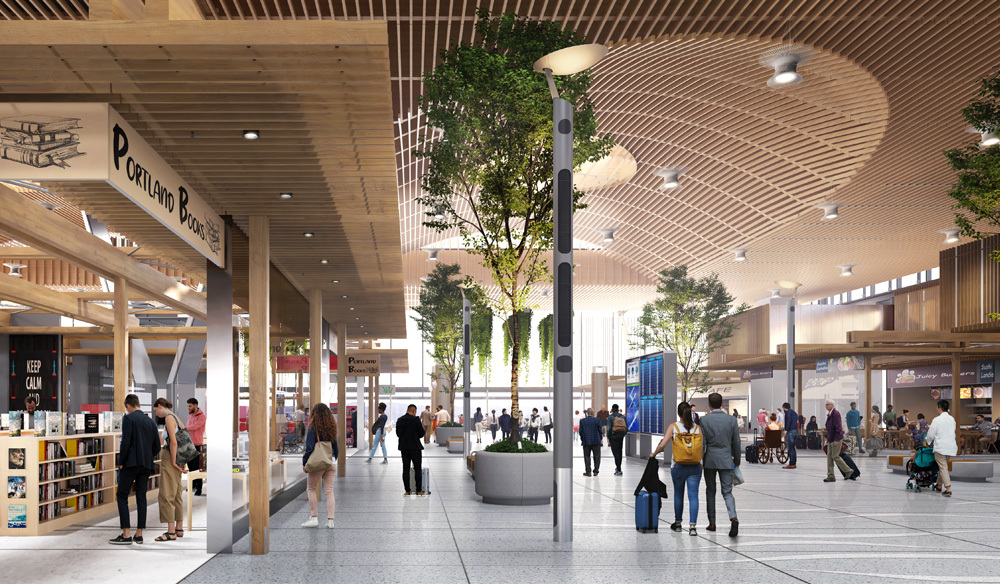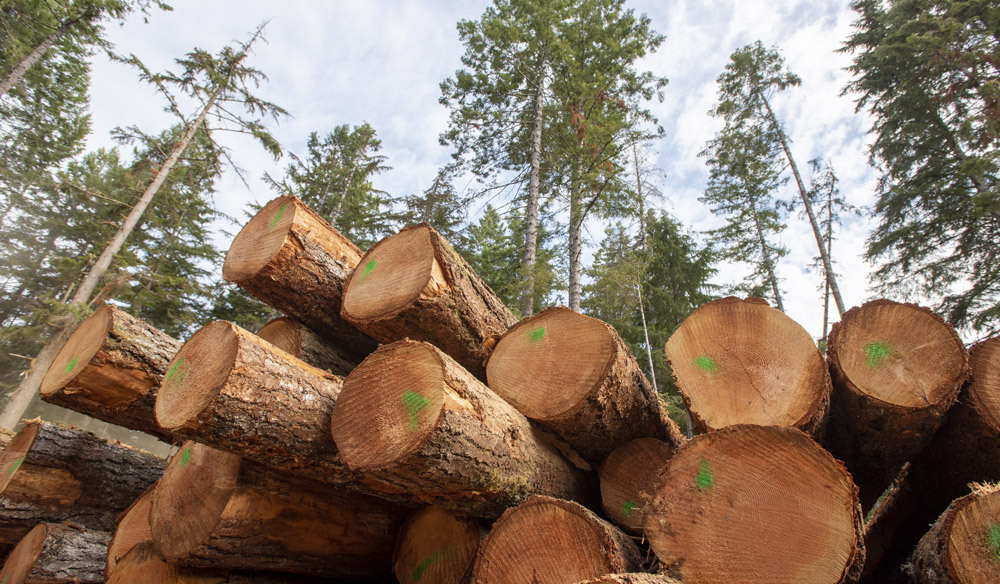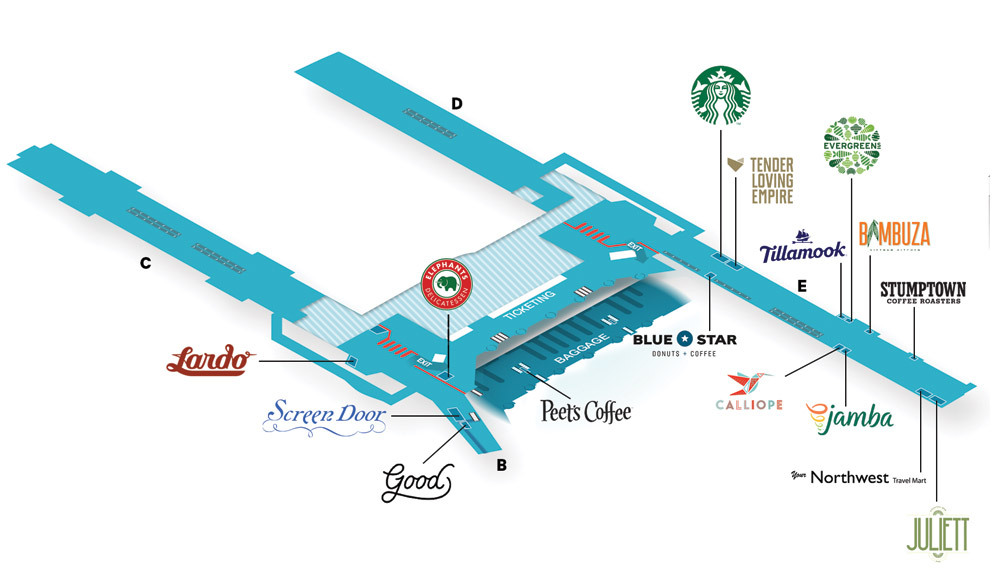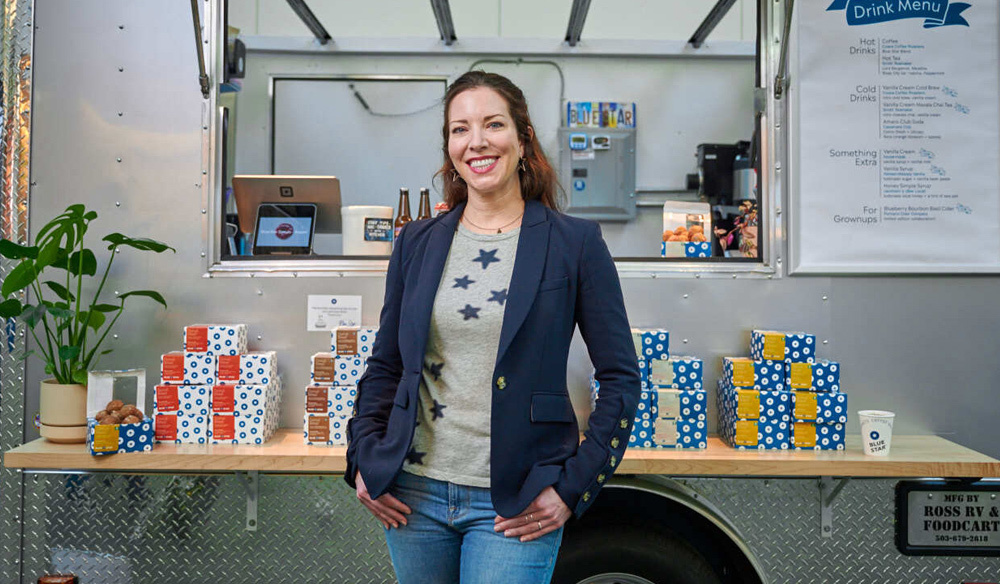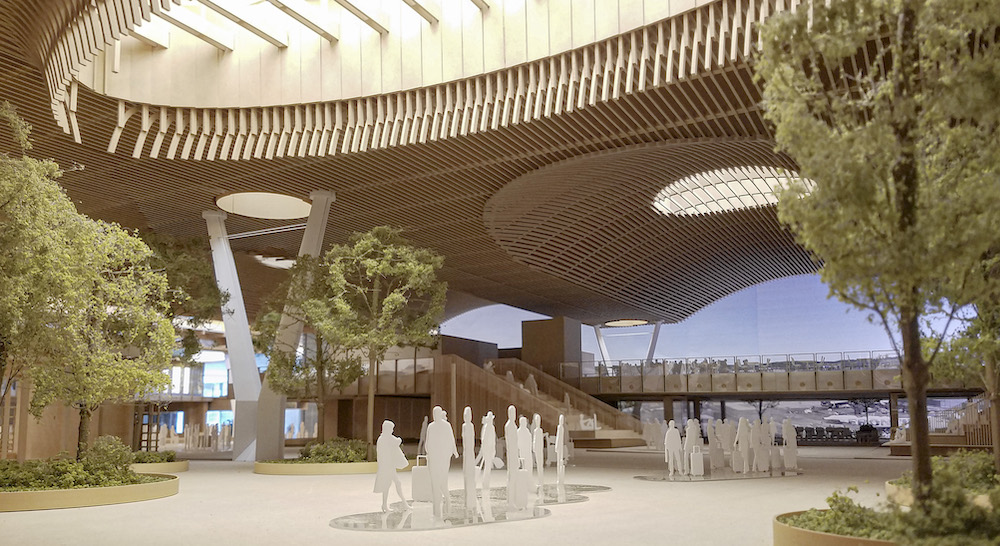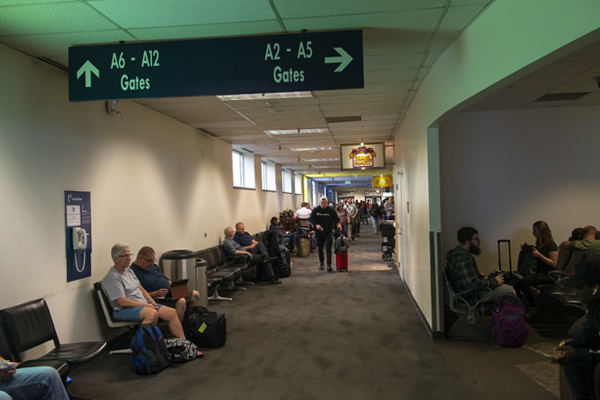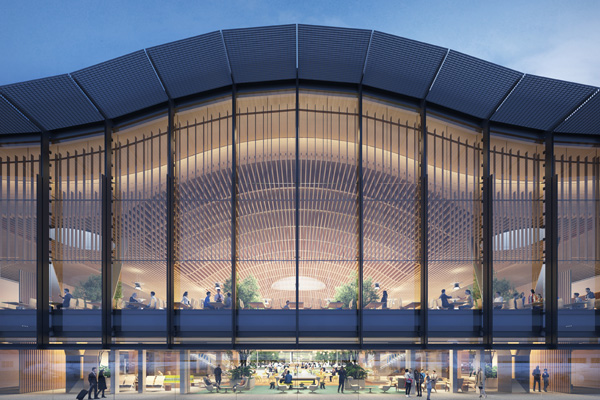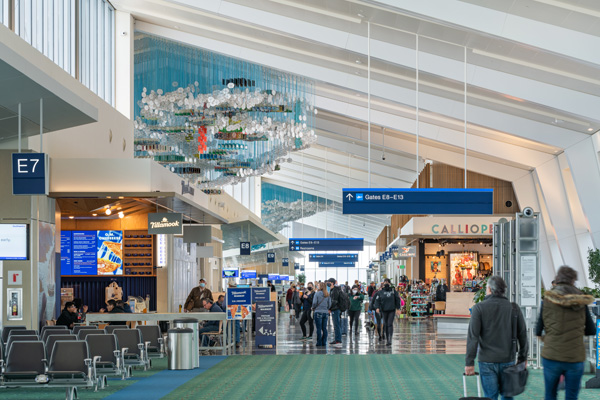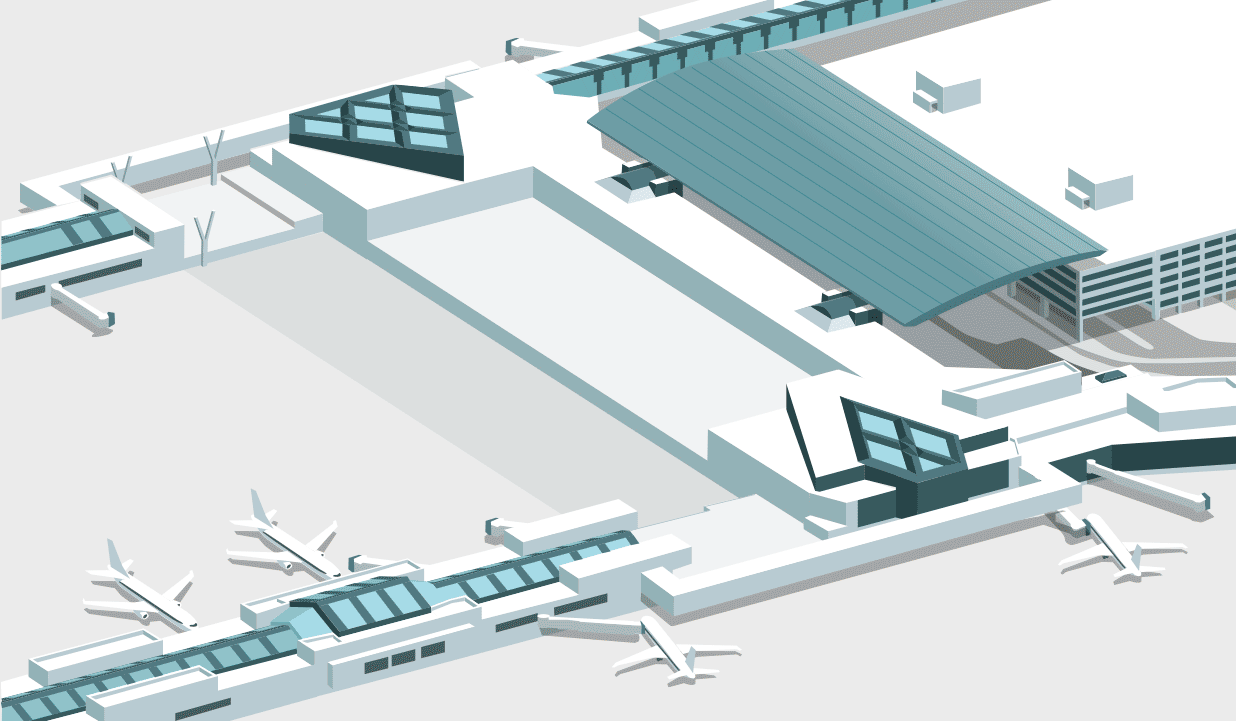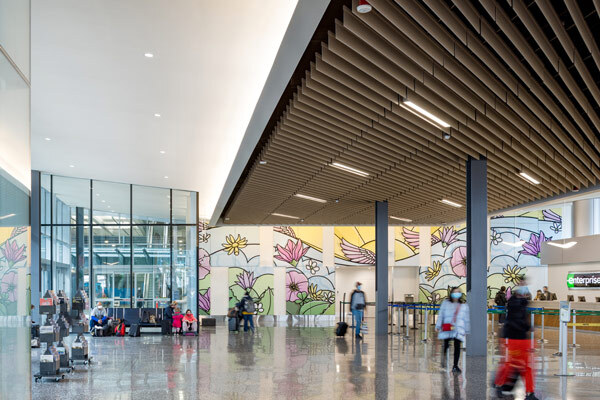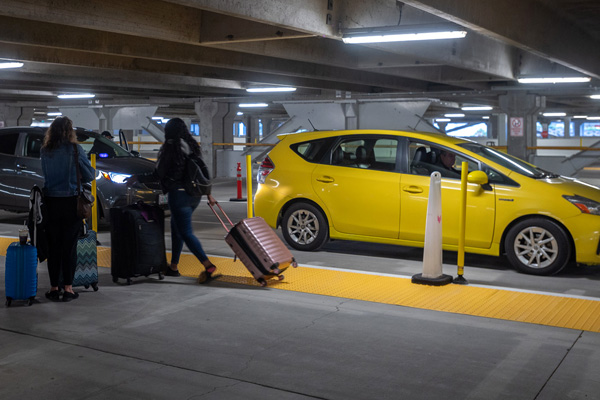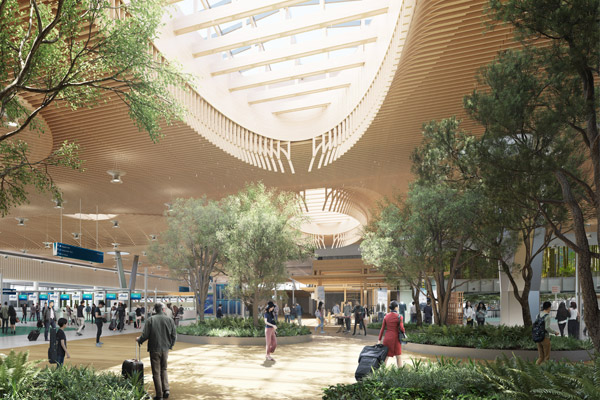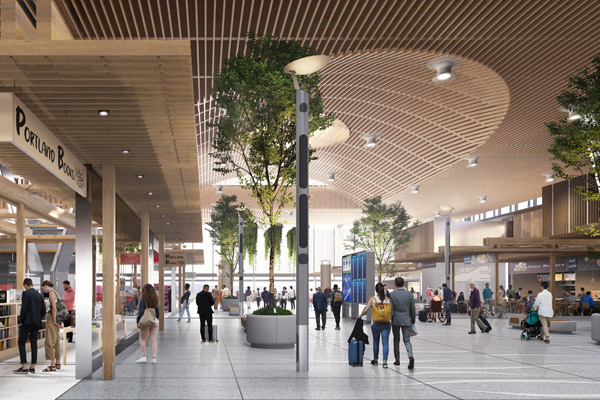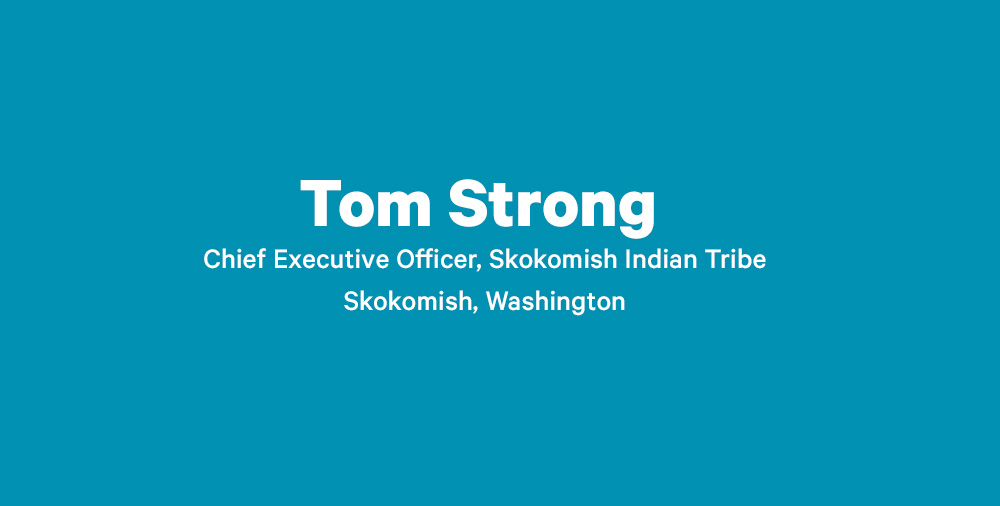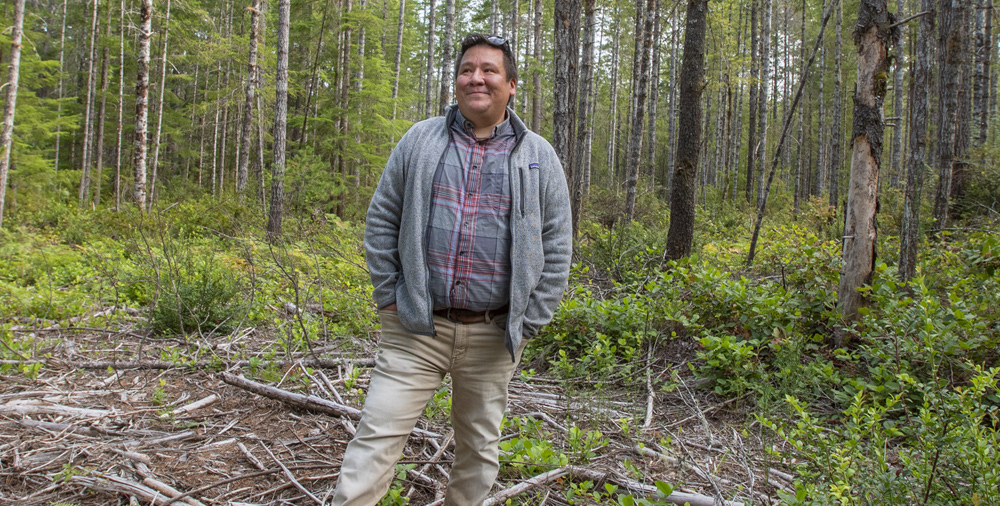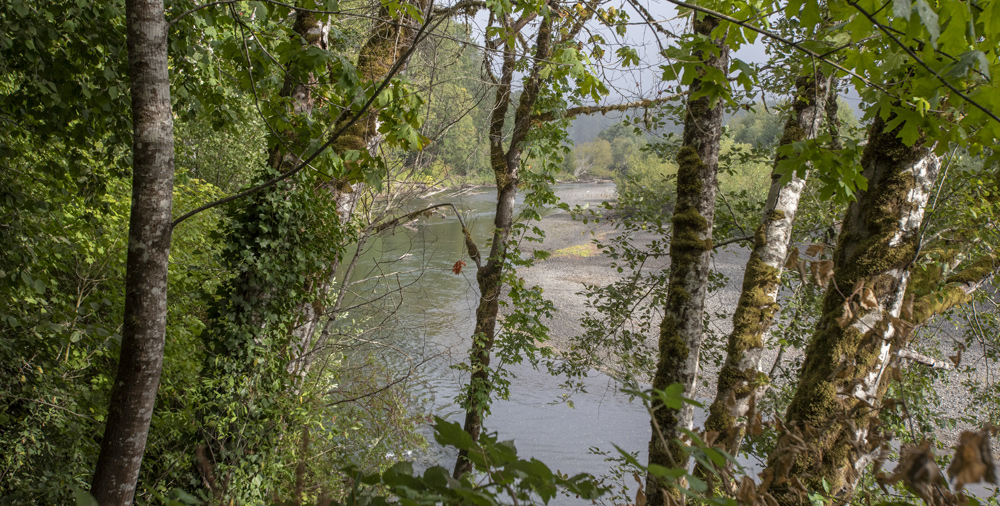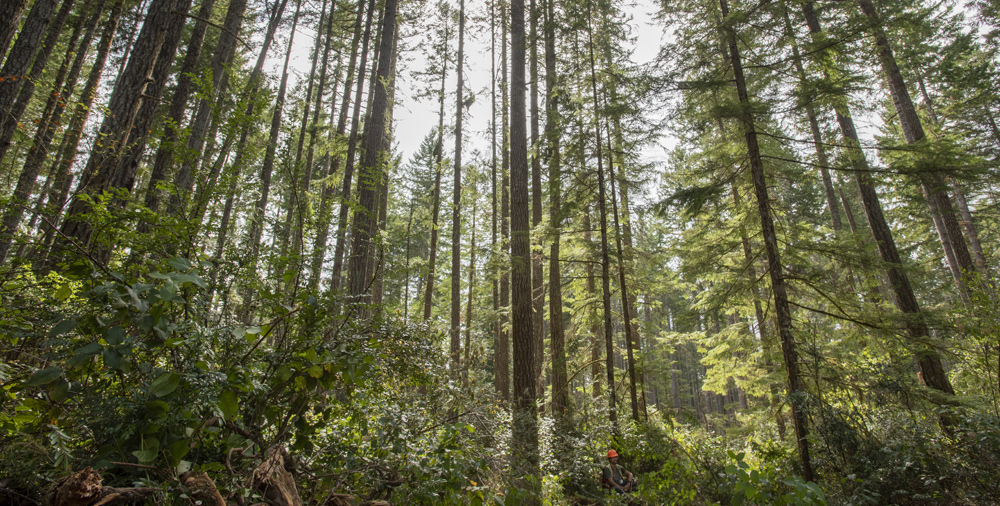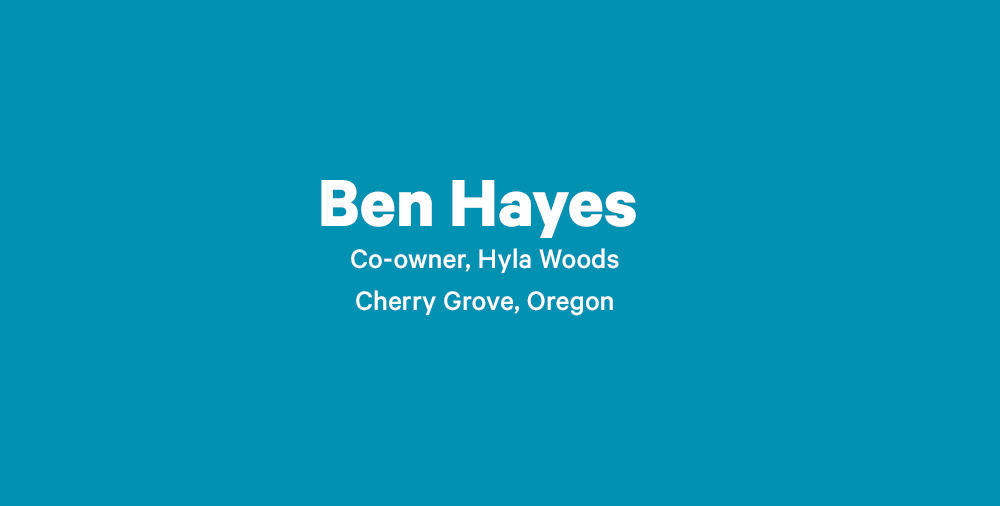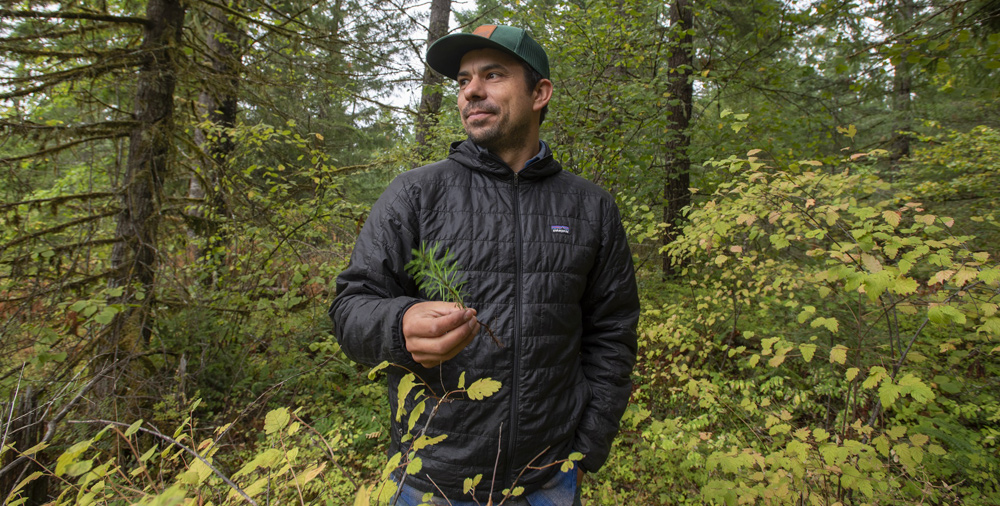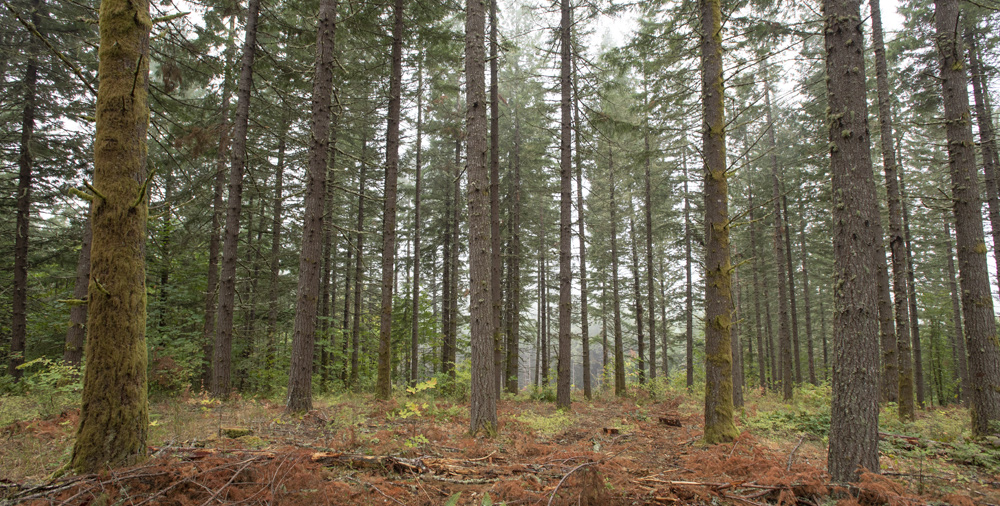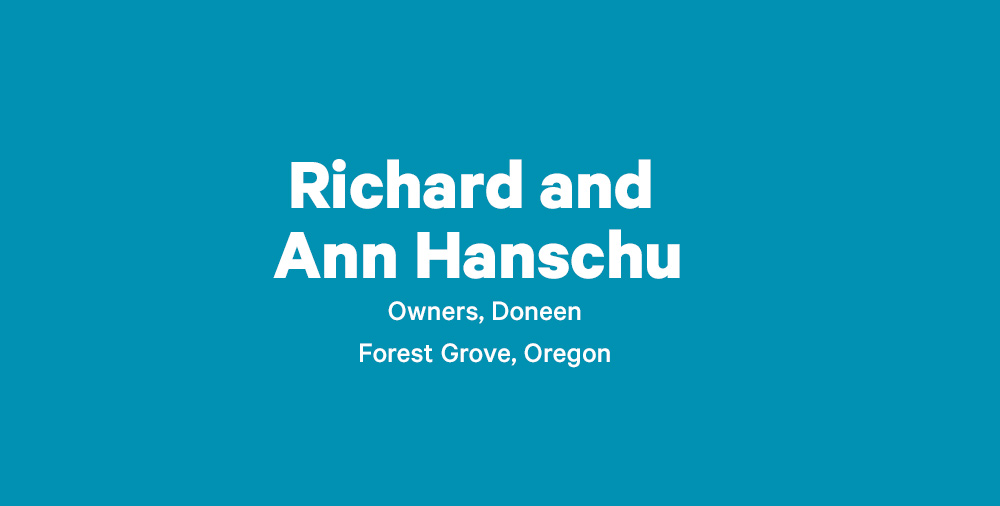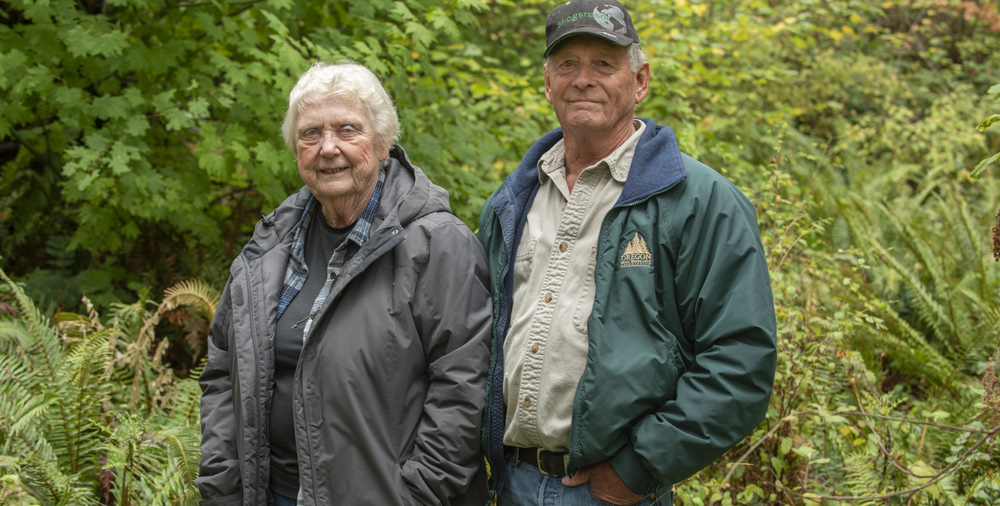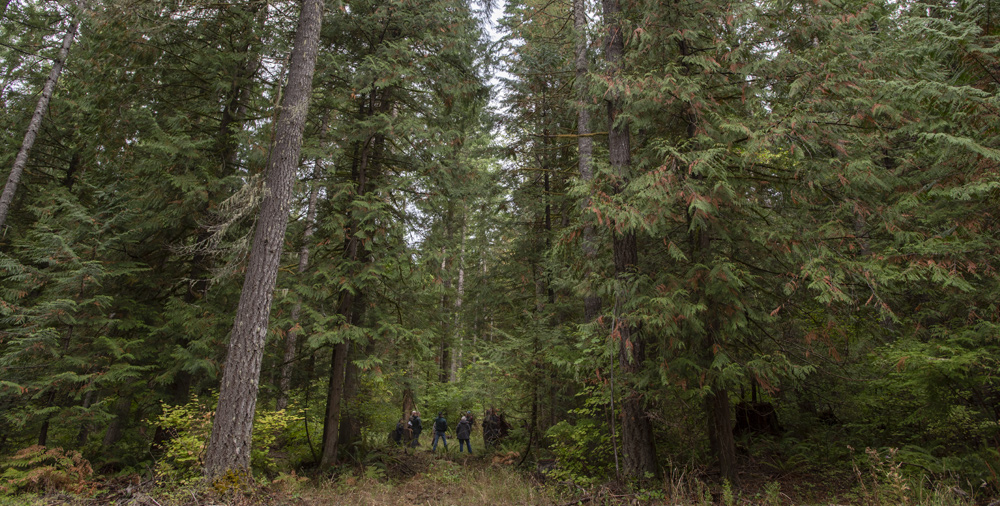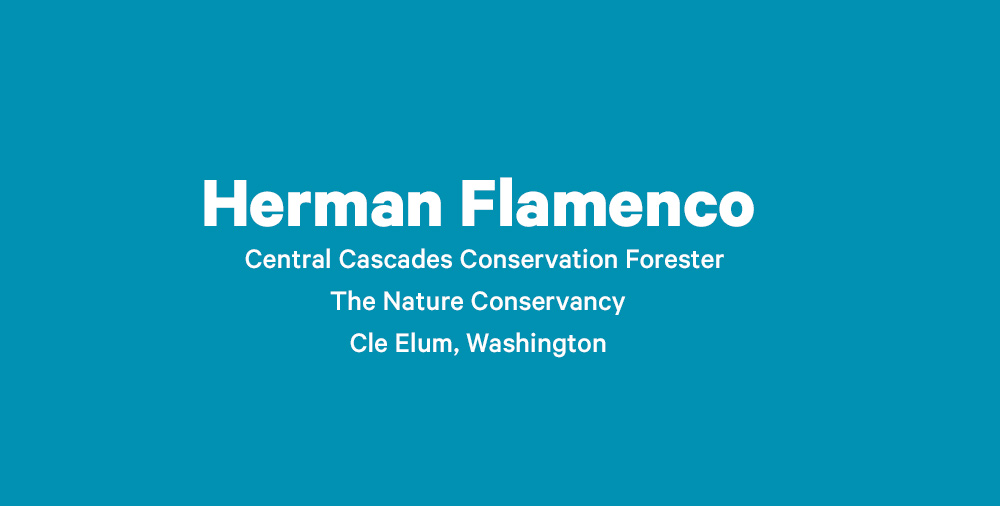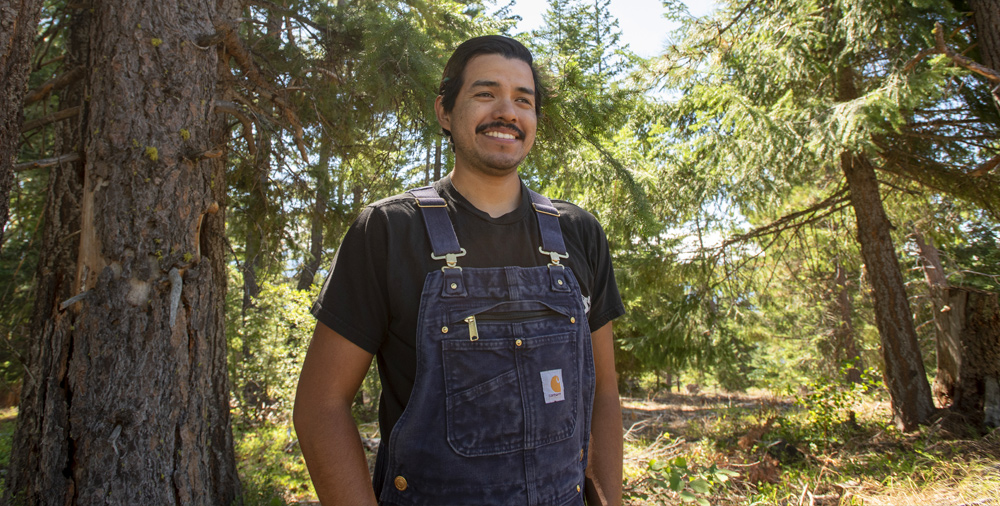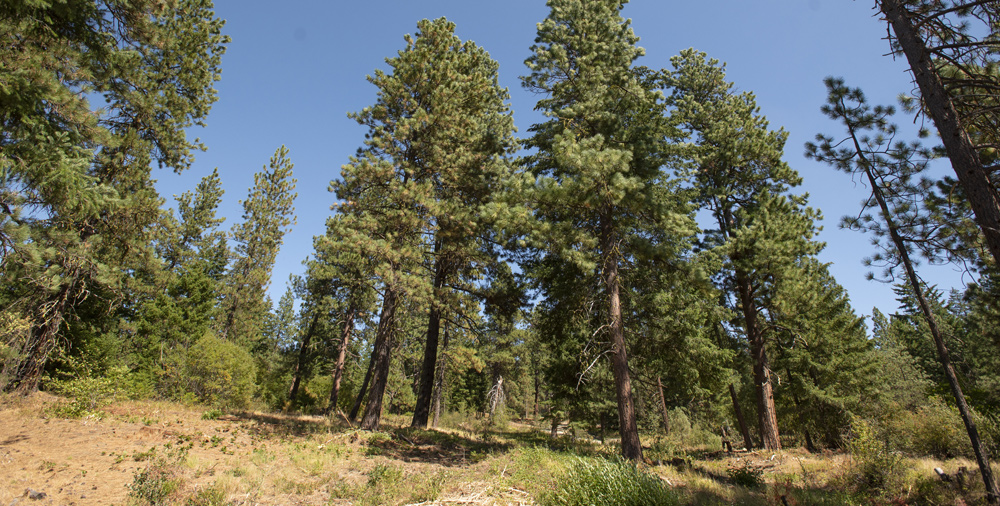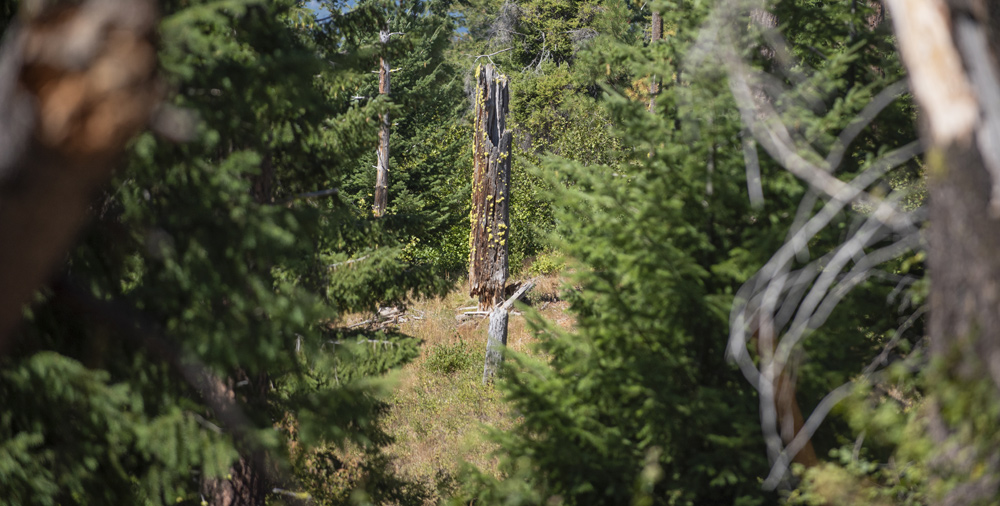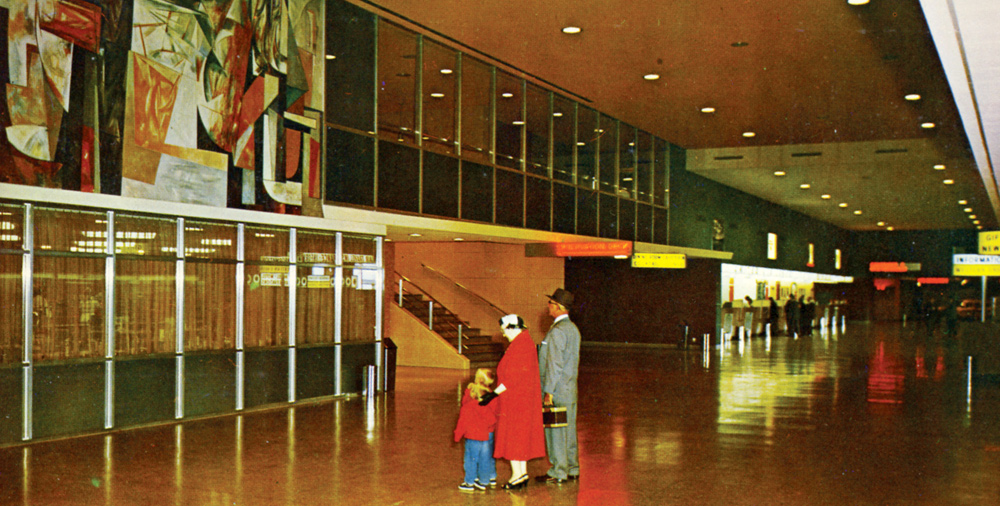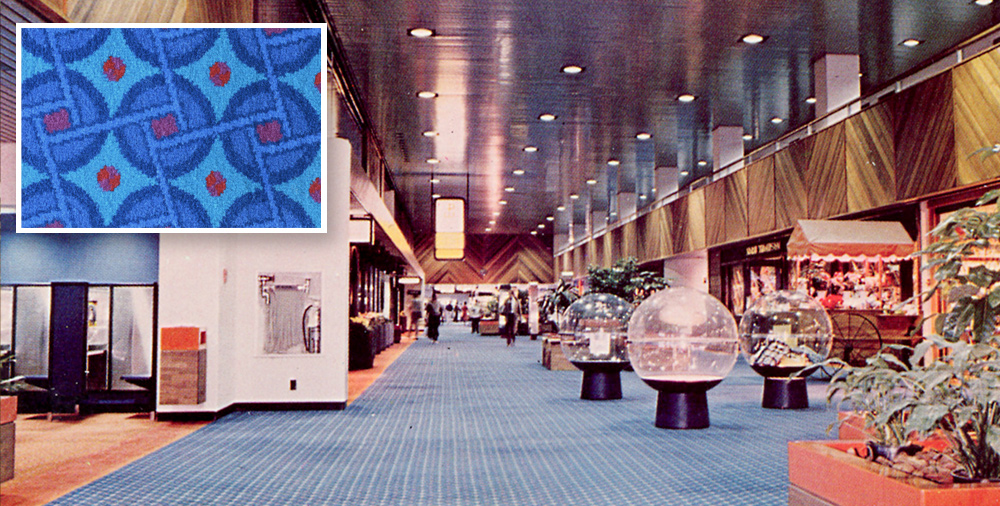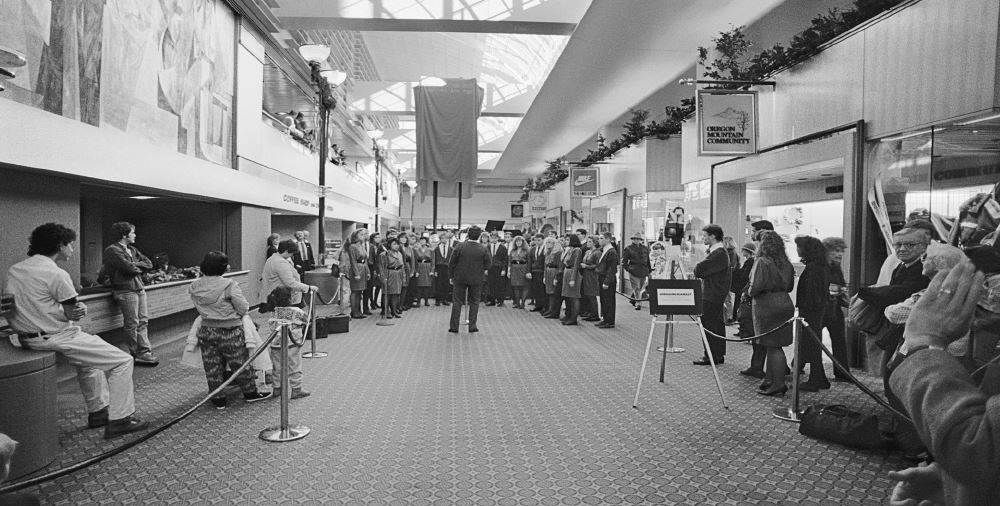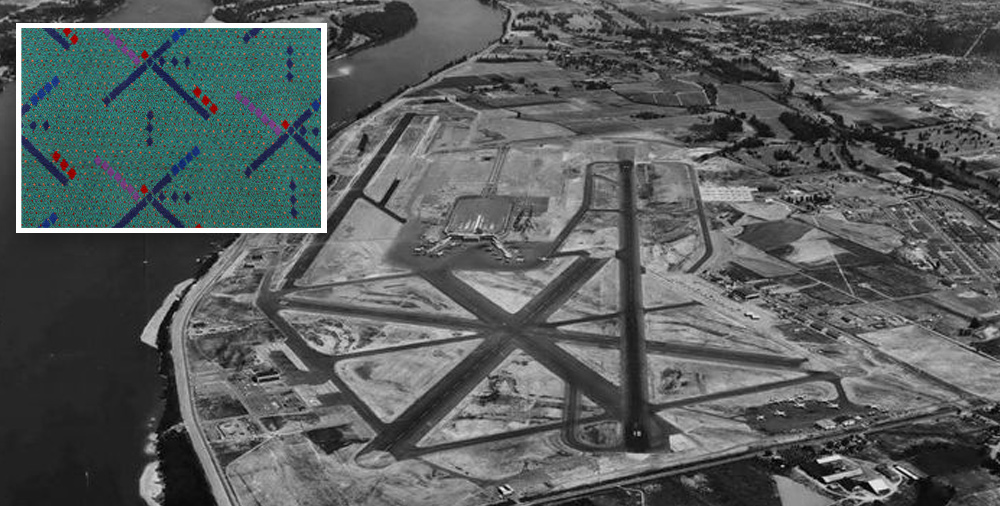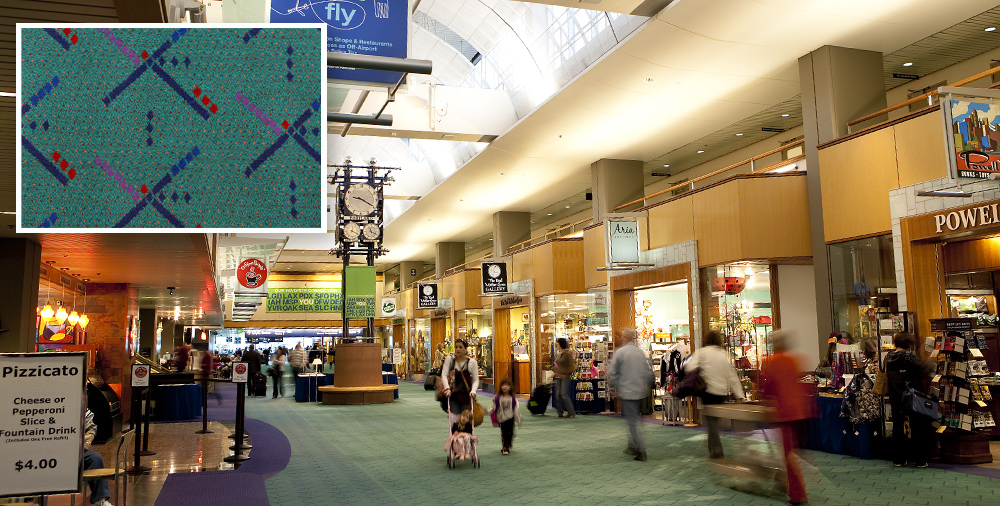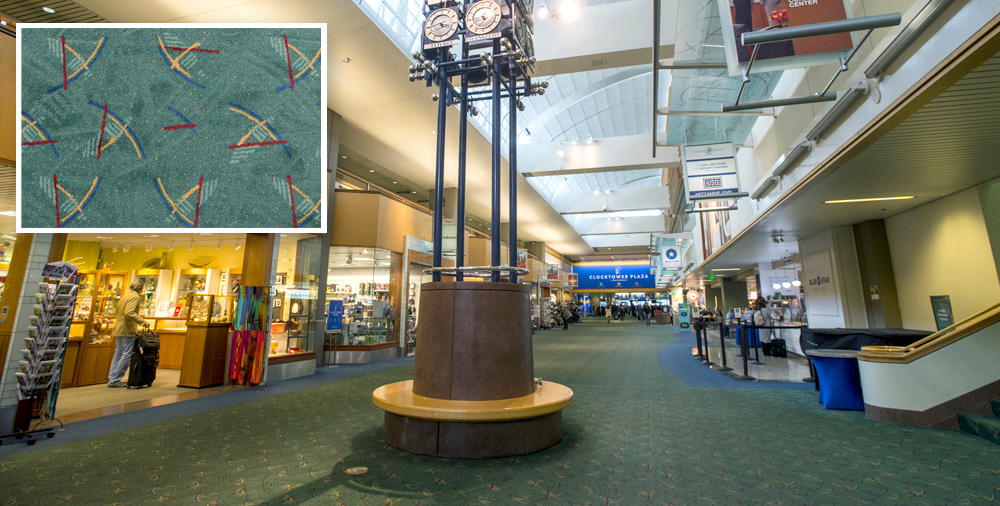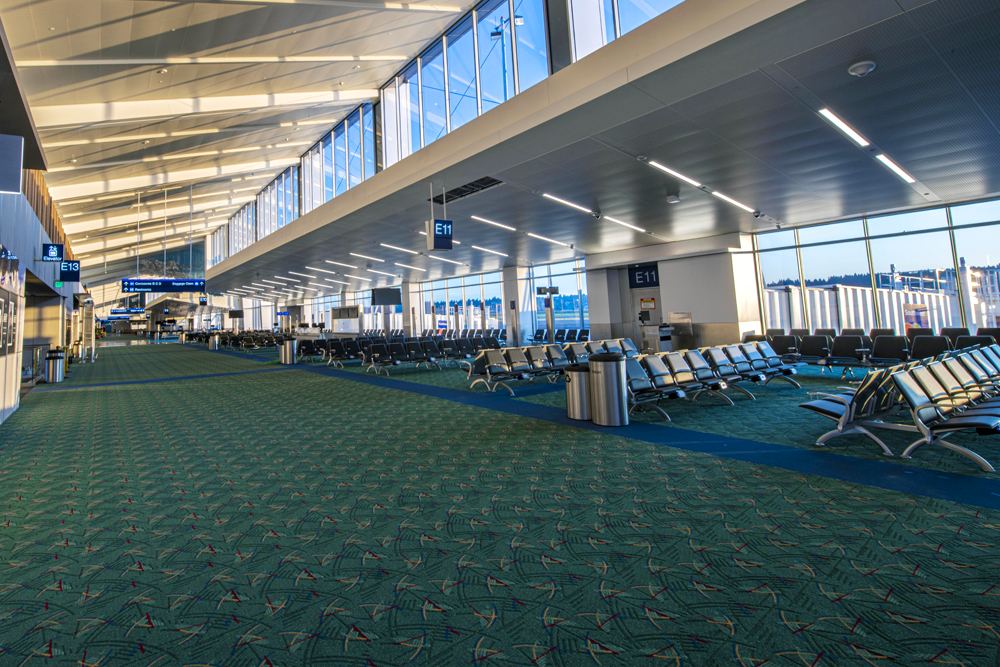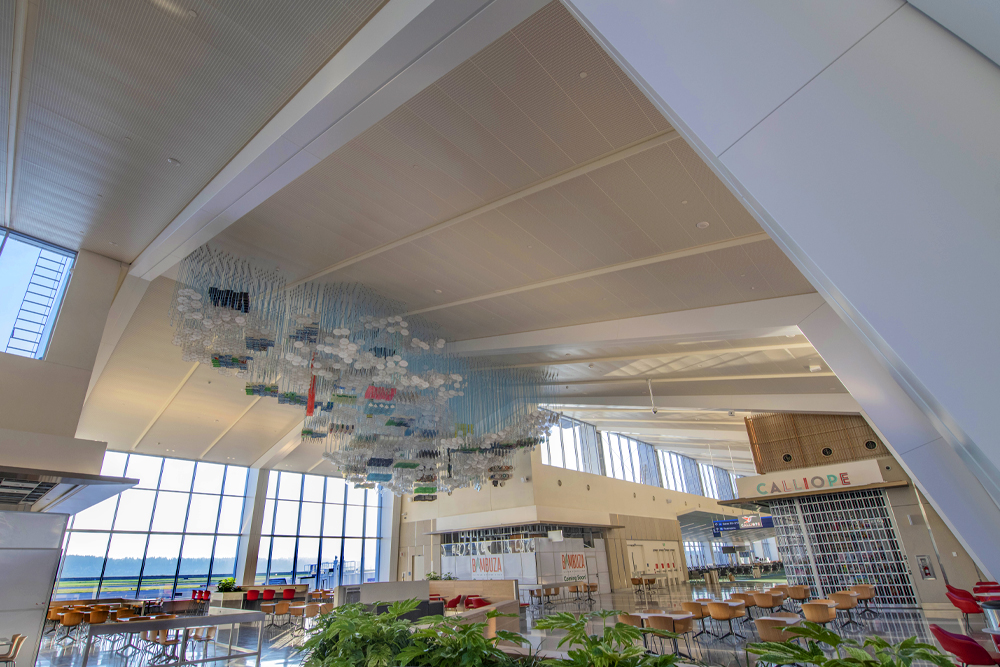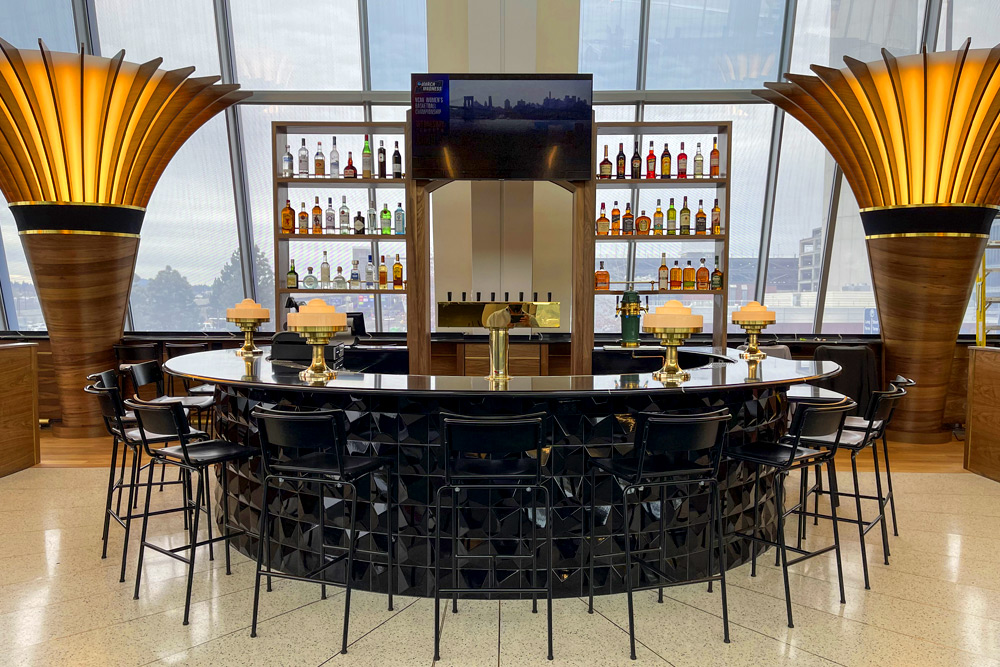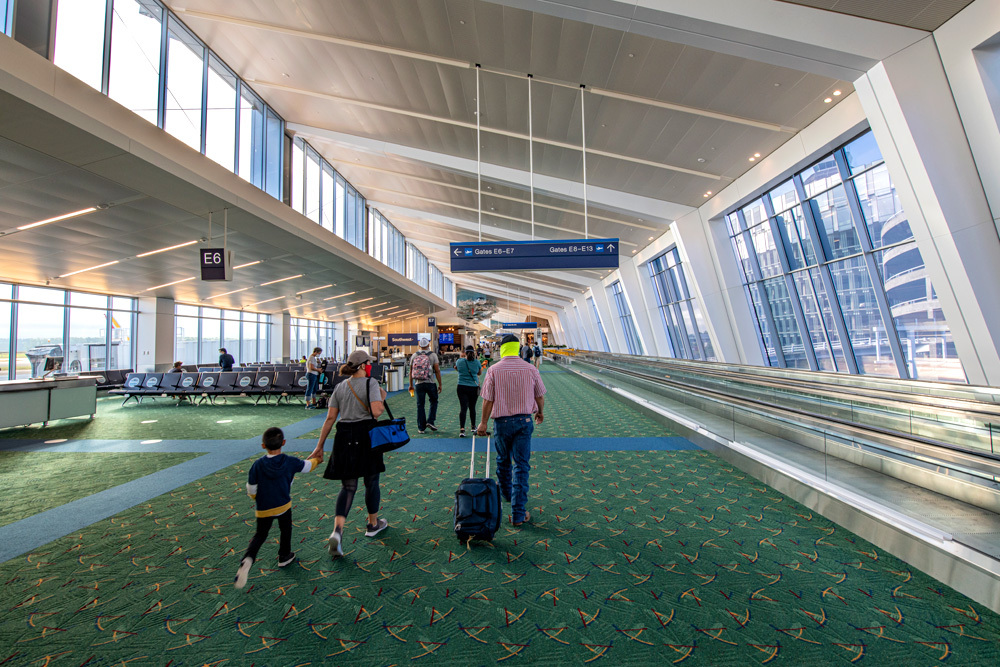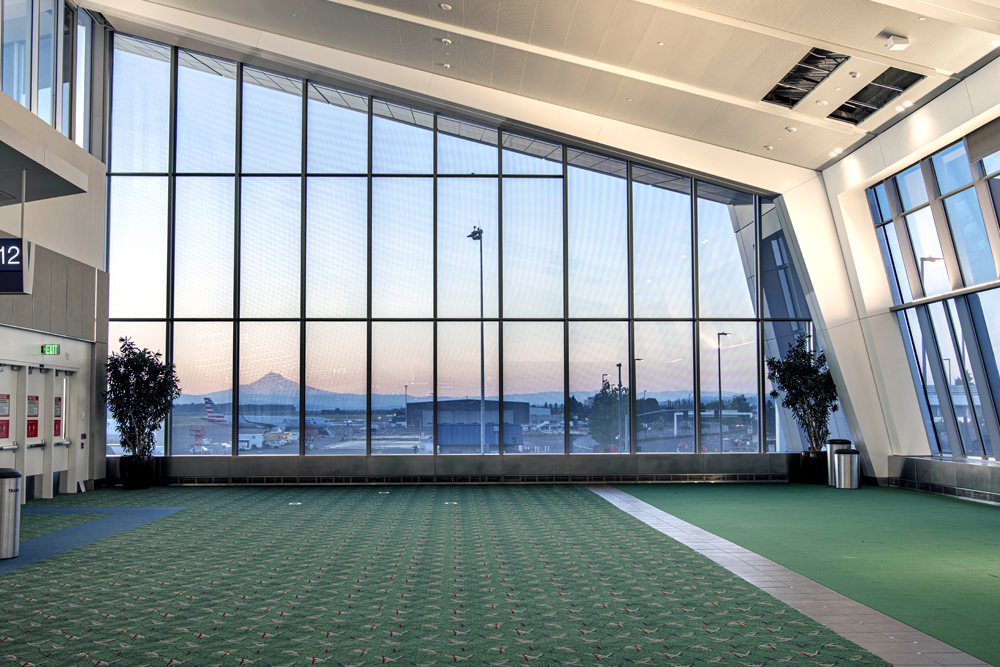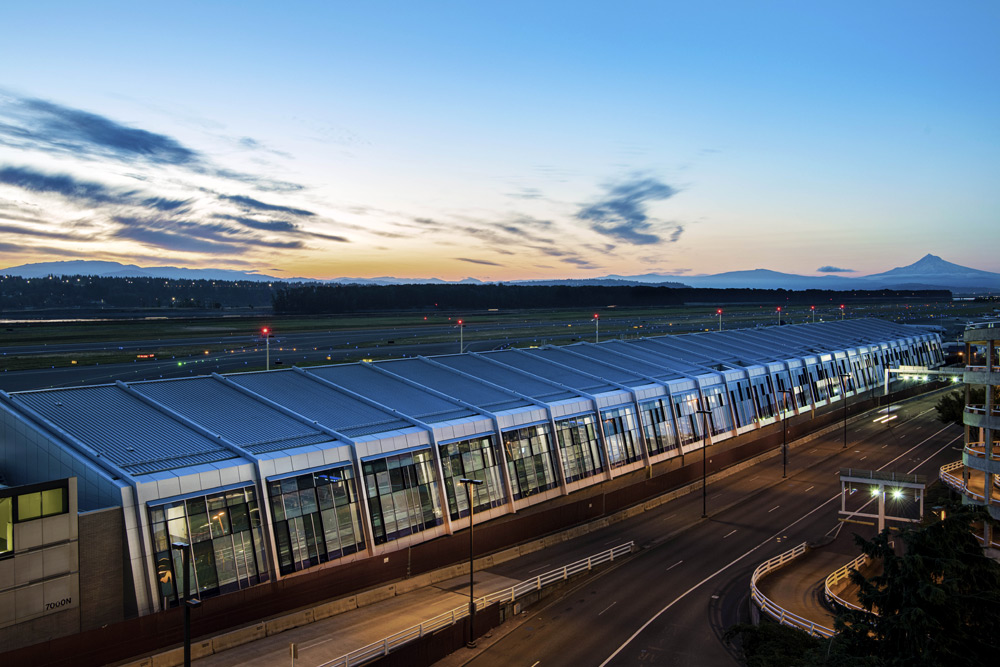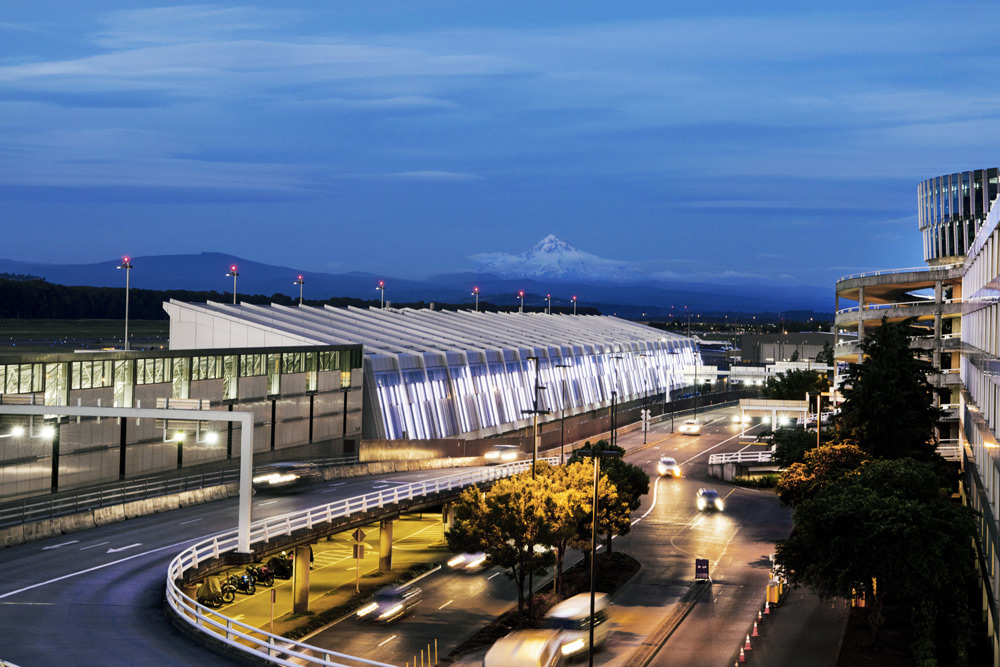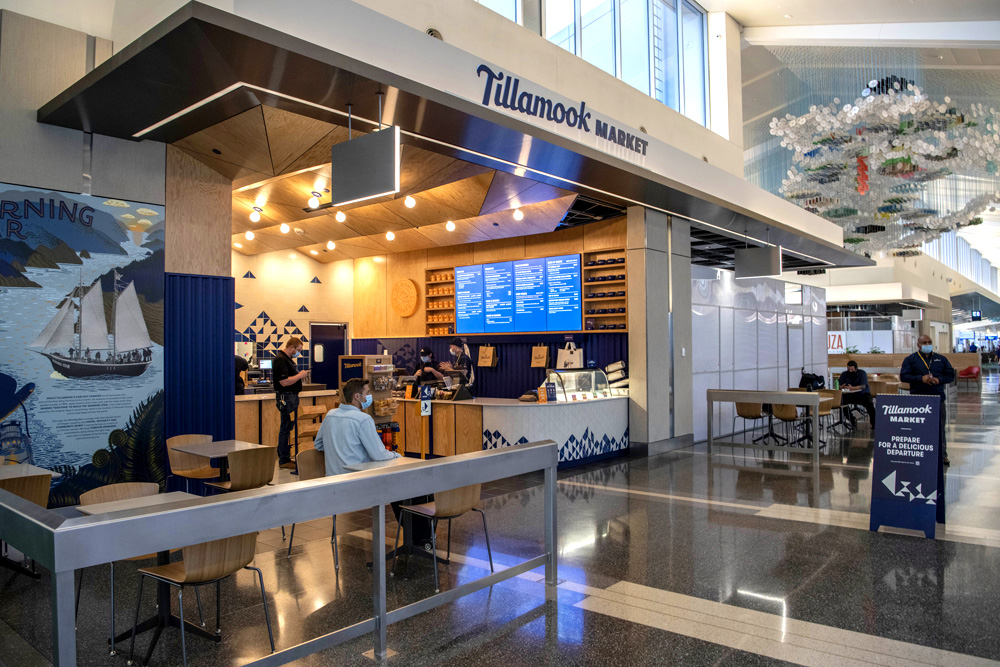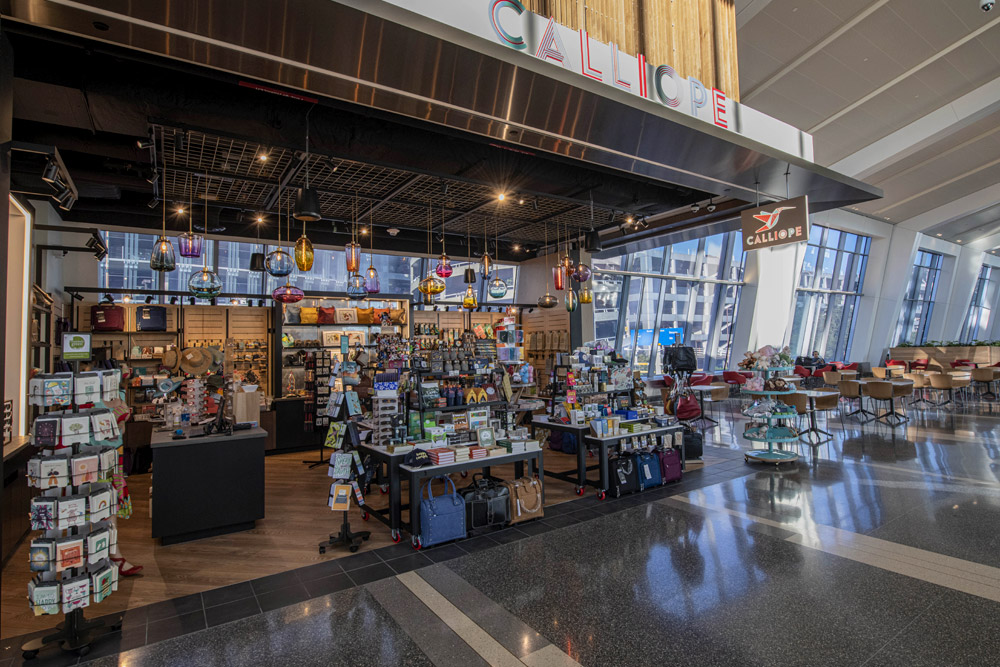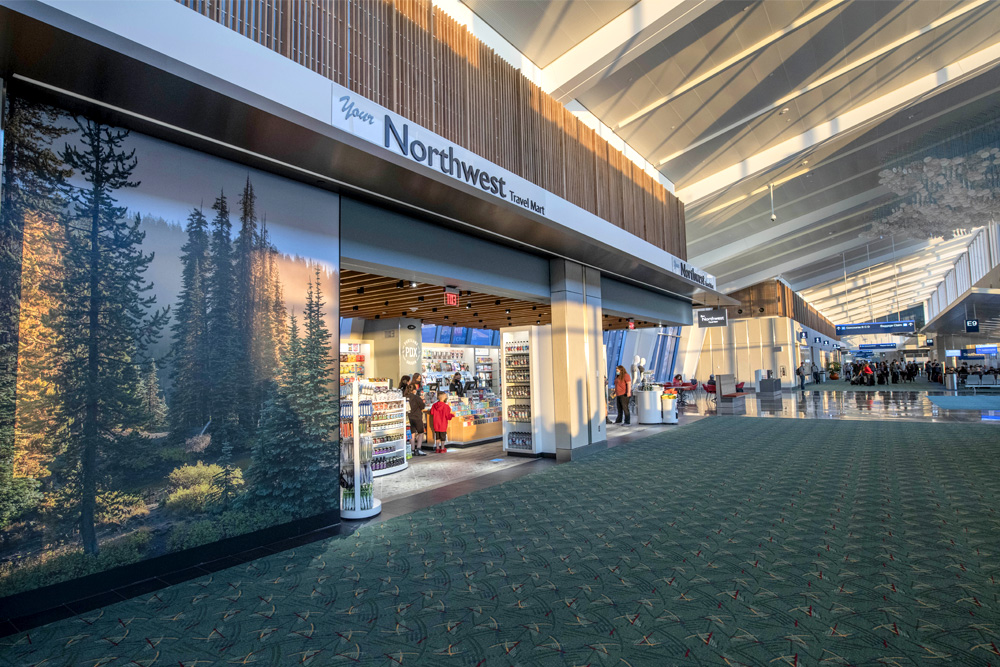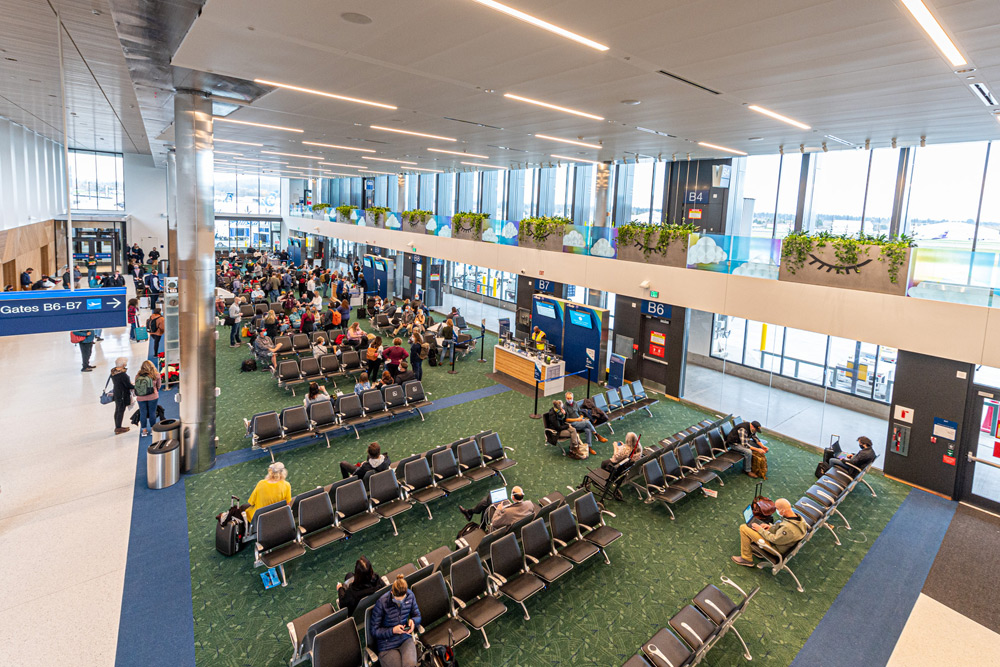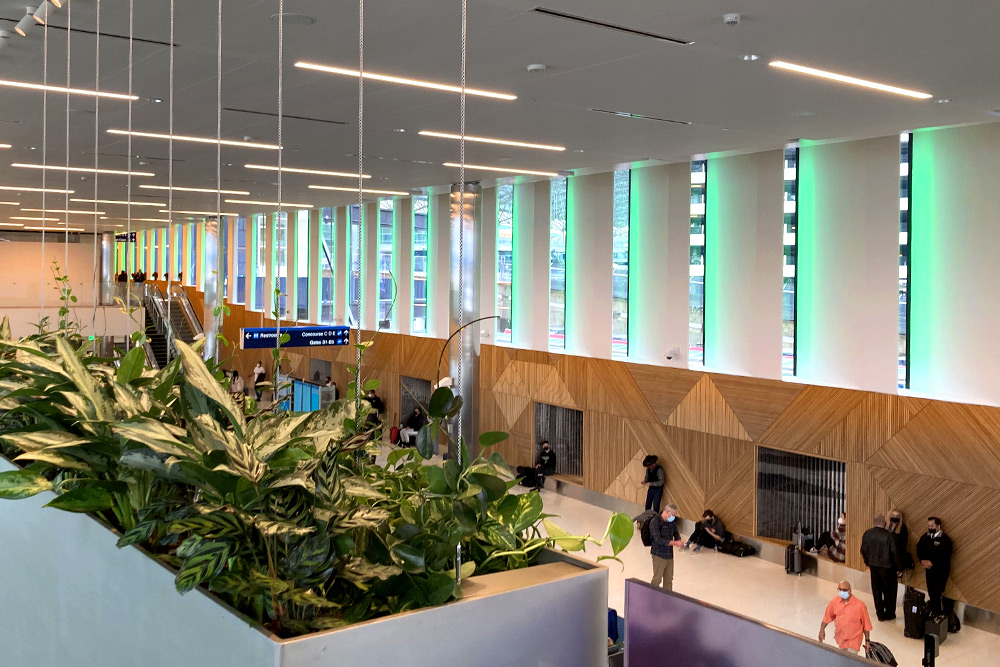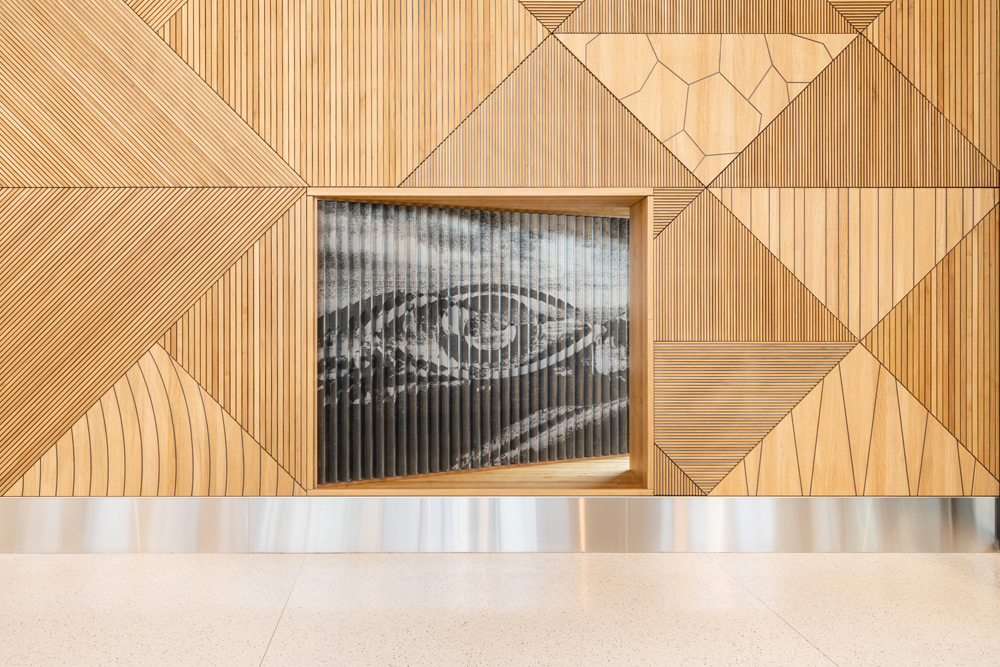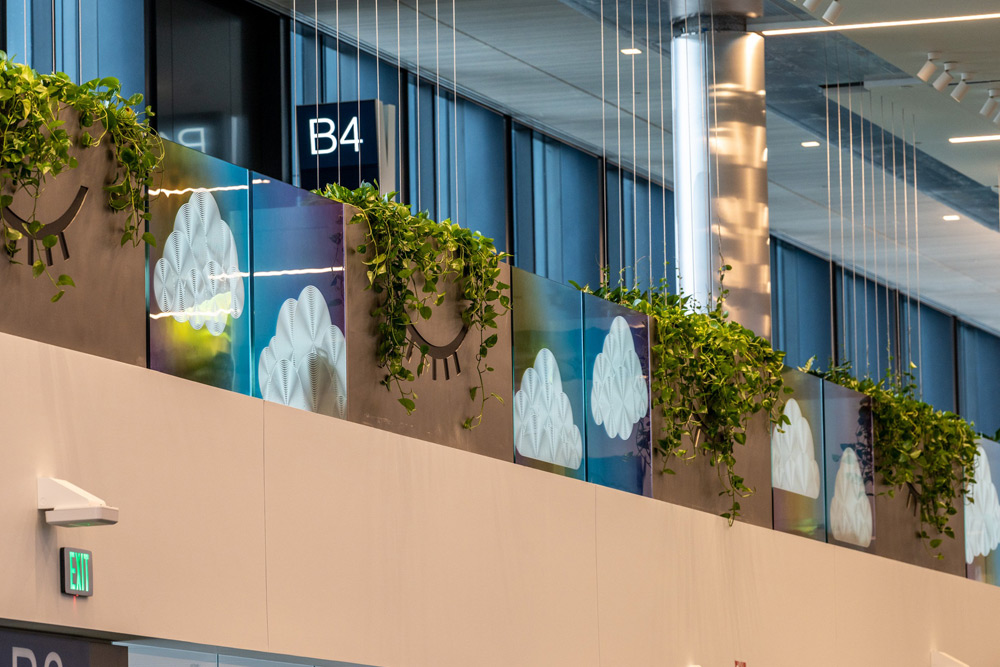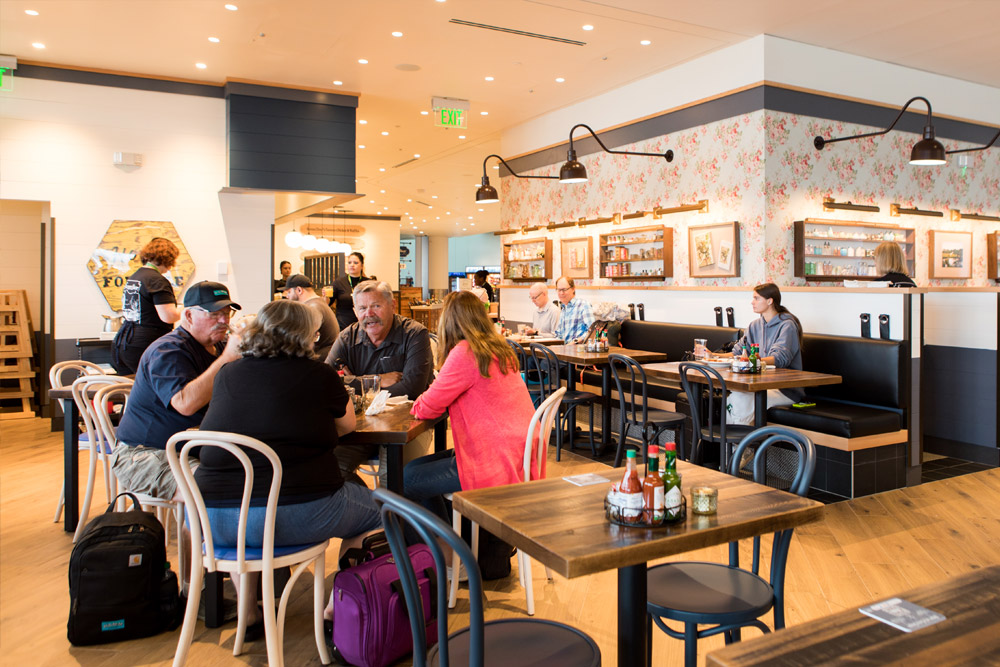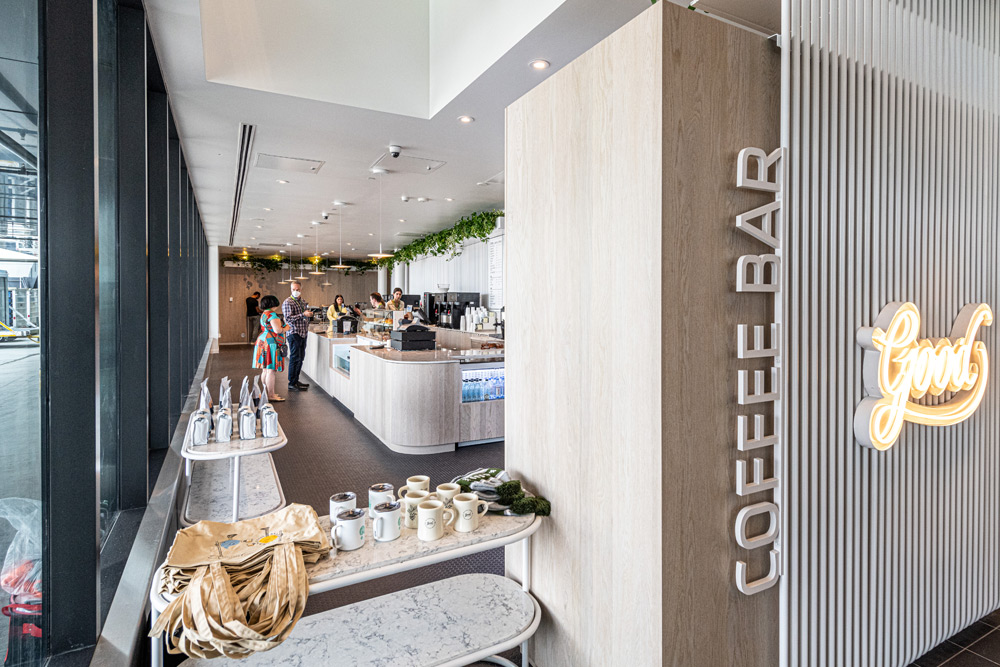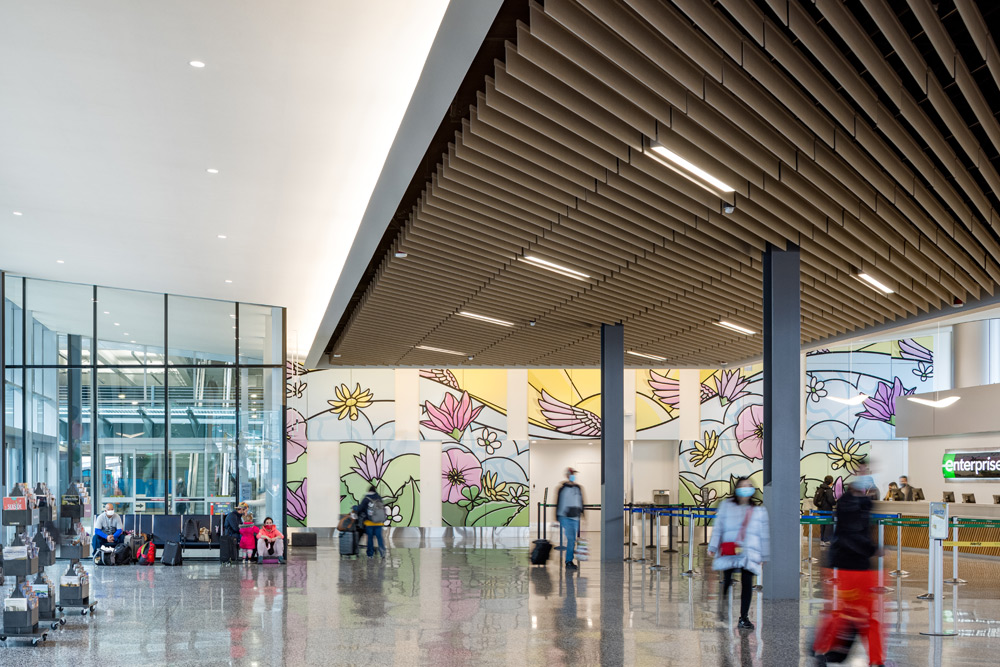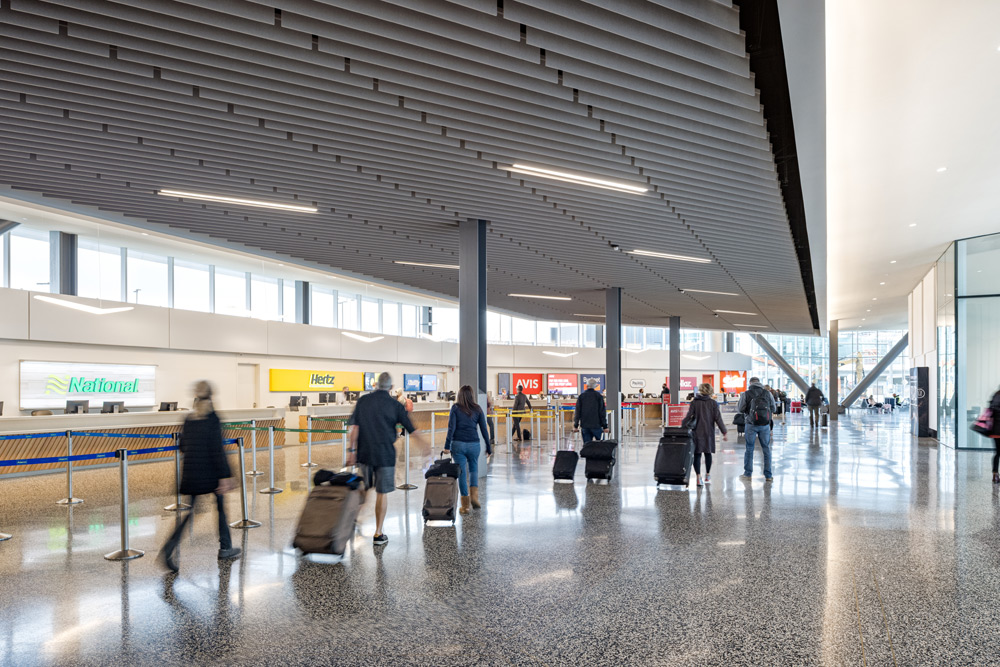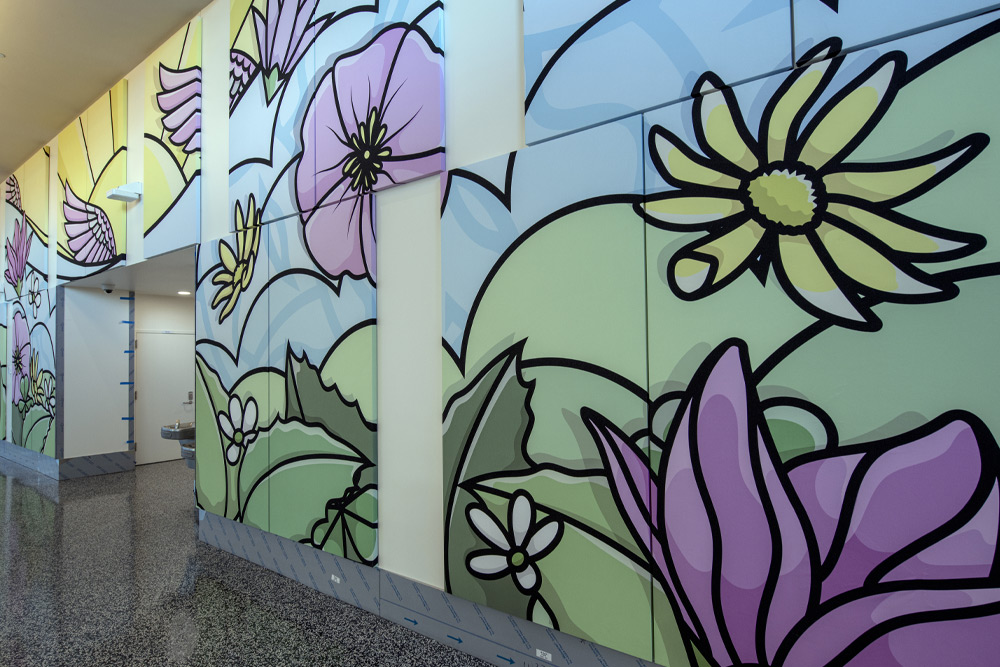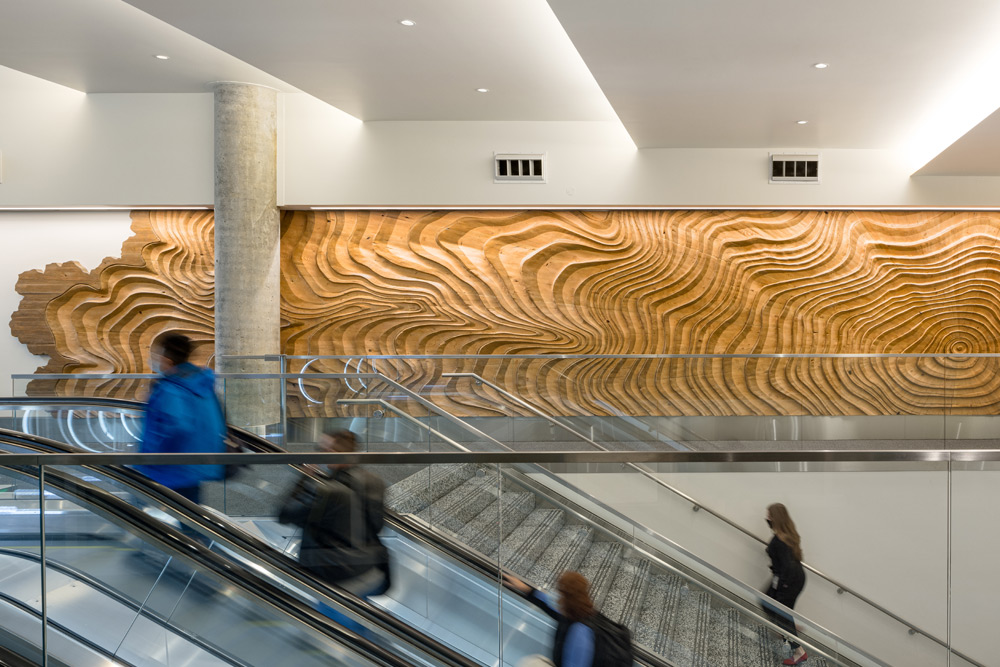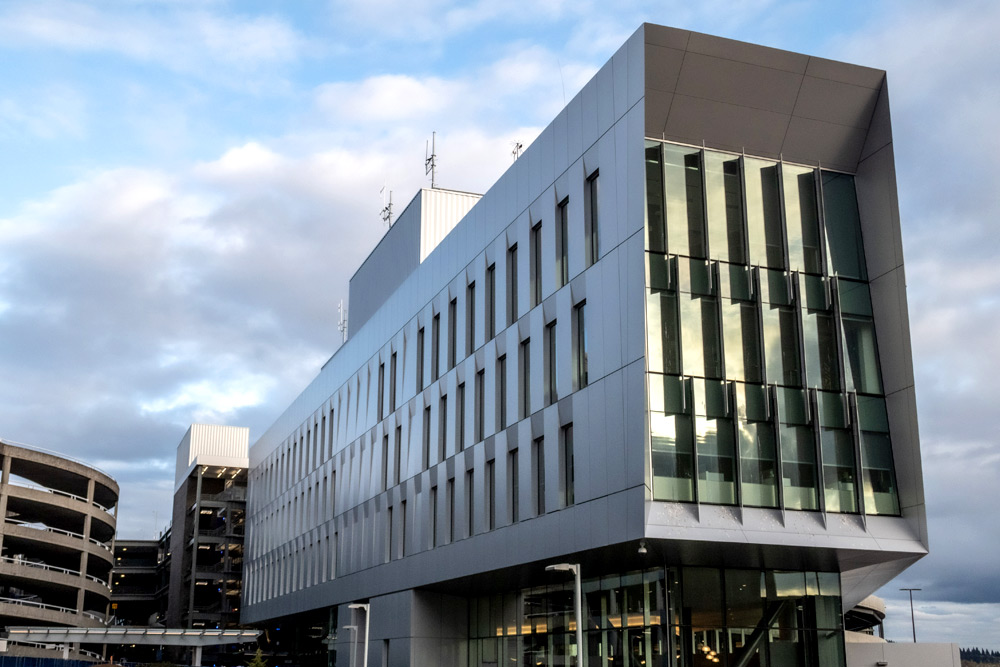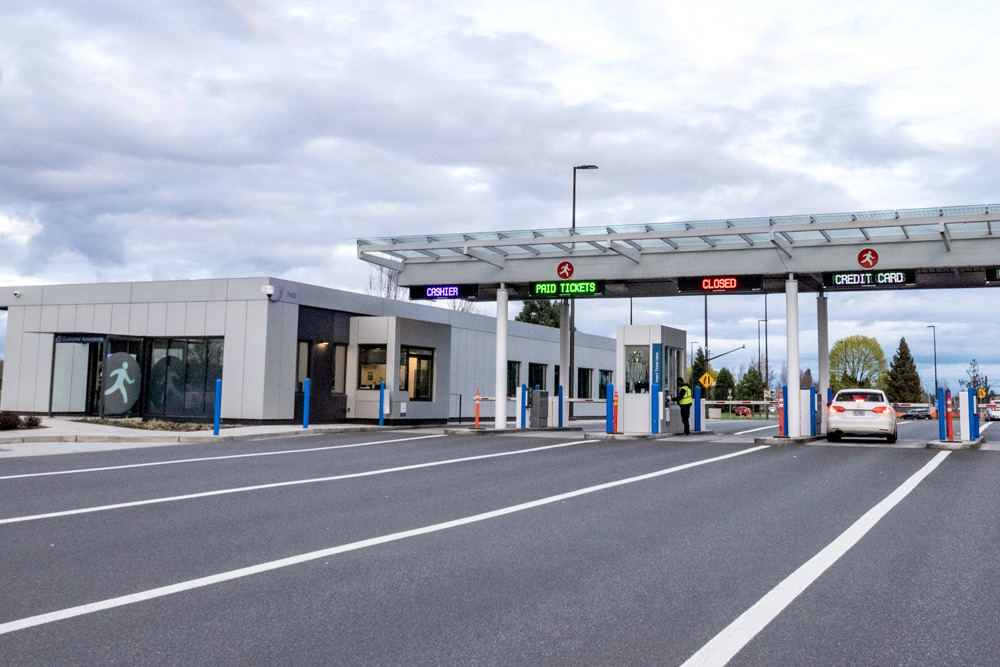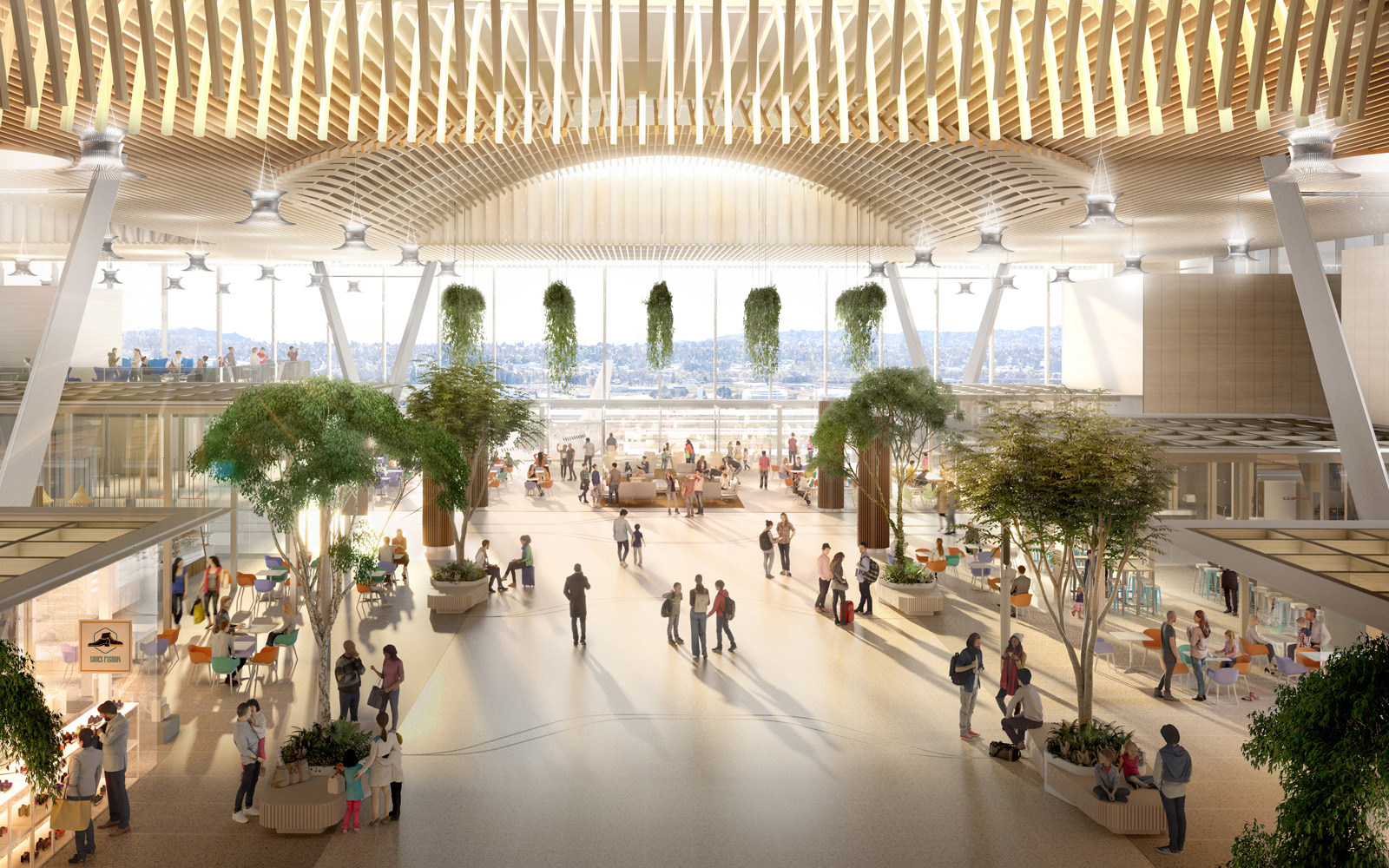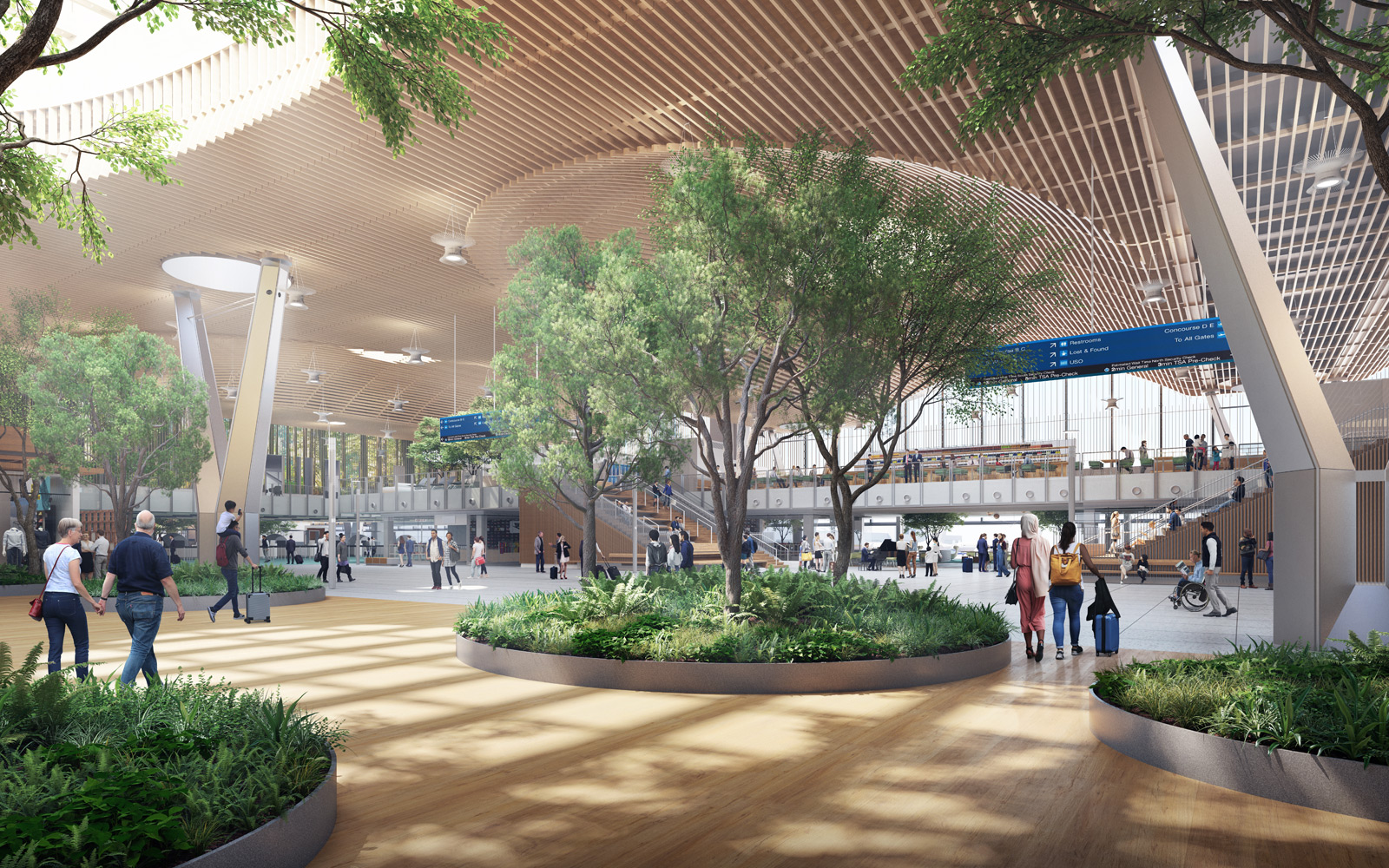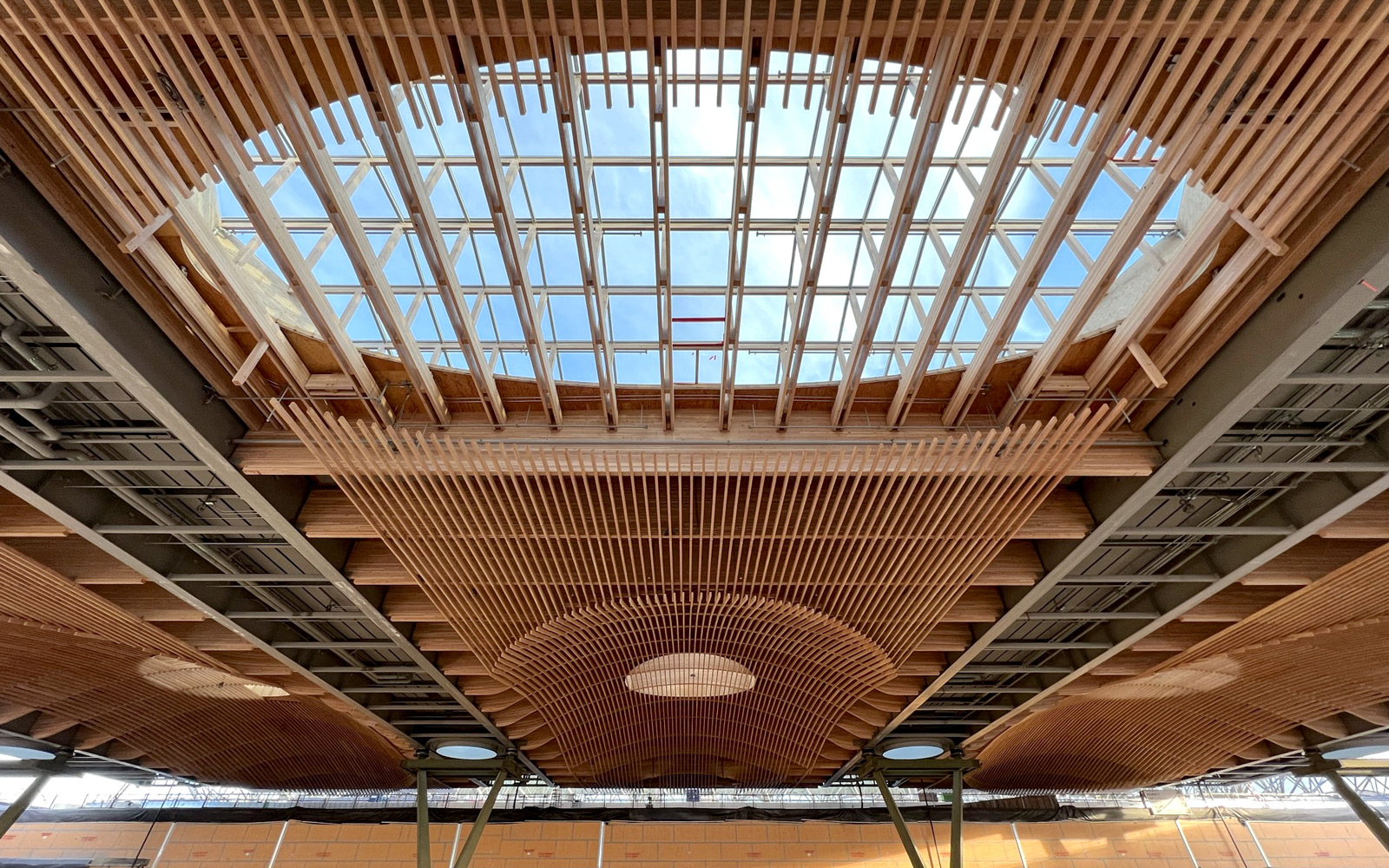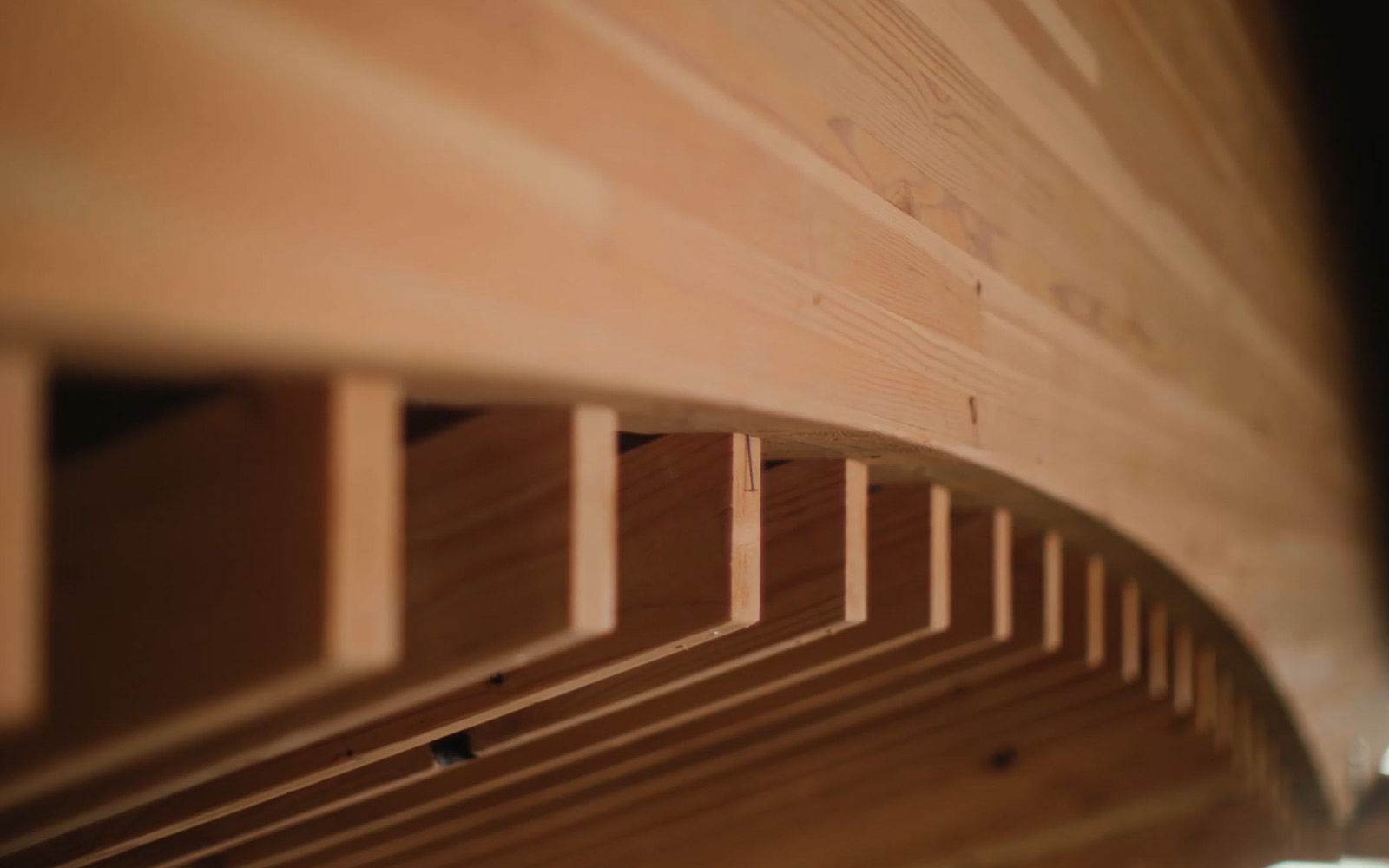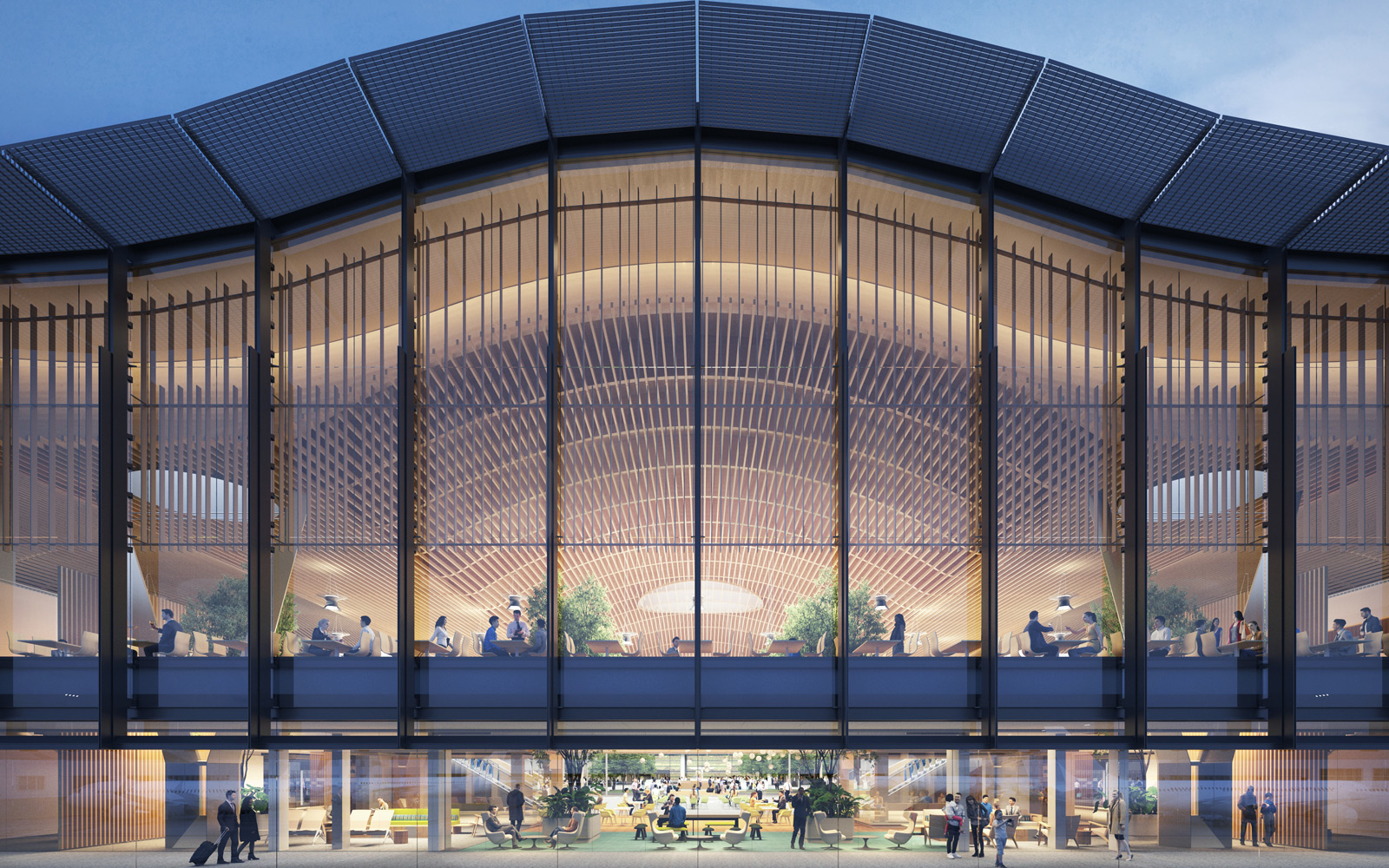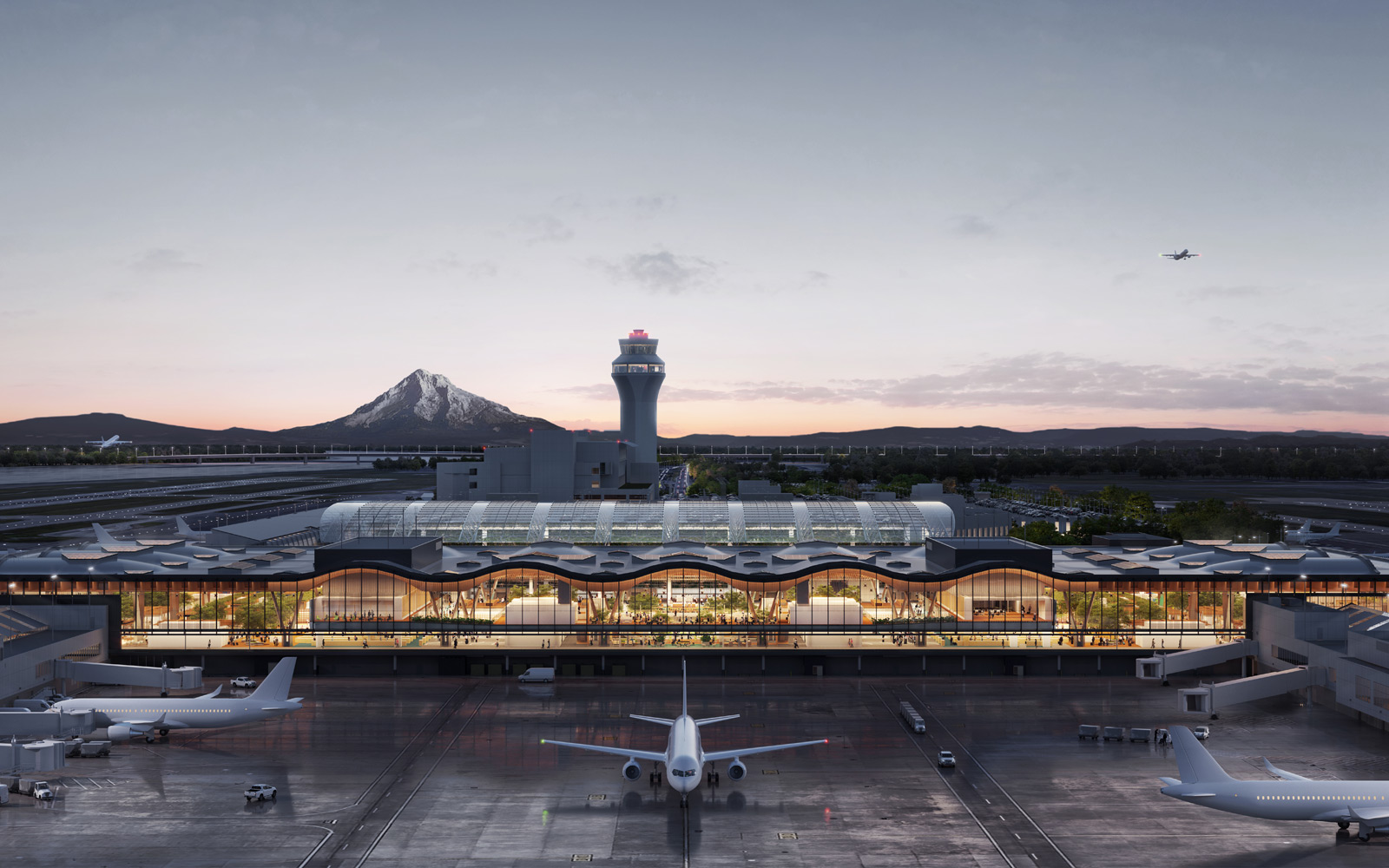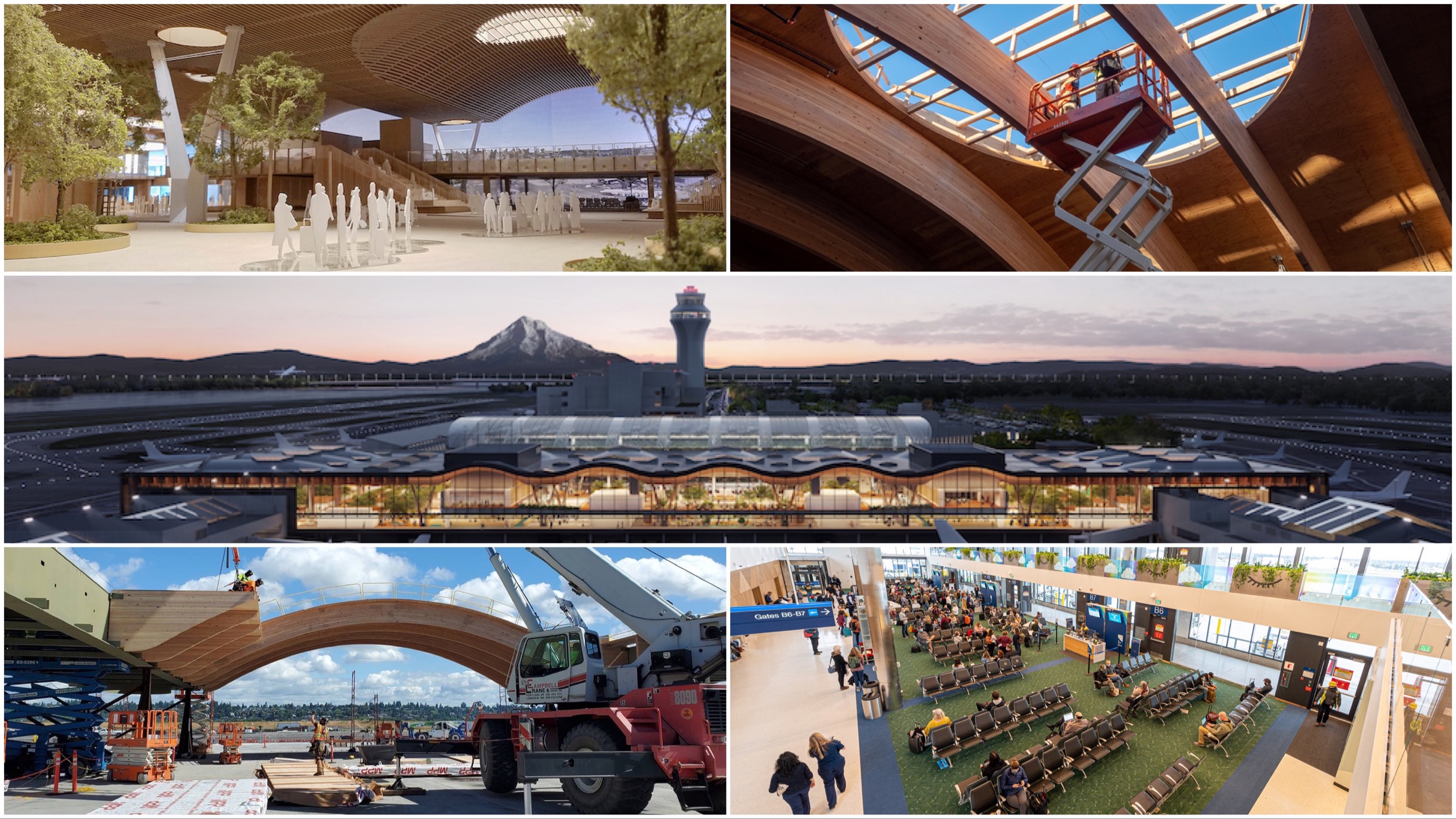
Quick update: This story was written in 2022. Want to read more about the new PDX?
It’s time to say goodbye to 2021, a year full of so many highs and lows. At Portland International Airport, we kept going with a brilliant team of construction workers, architects and landowners to make PDX even more, well, PDX. That means creating healthy spaces optimized for sustainability, earthquake resilience and your wellbeing. Along the way, we made room for new artists that celebrate the diversity of our region.
Here’s a look back at our most-read stories in 2021 and the work we did to make the airport we love even better. There's a lot to look forward to in 2022 when we raise a new roof over PDX — and we can’t wait to keep showing you all the magical stuff happening behind the scenes.
New Renderings Show Off the Very PNW Designs for PDX
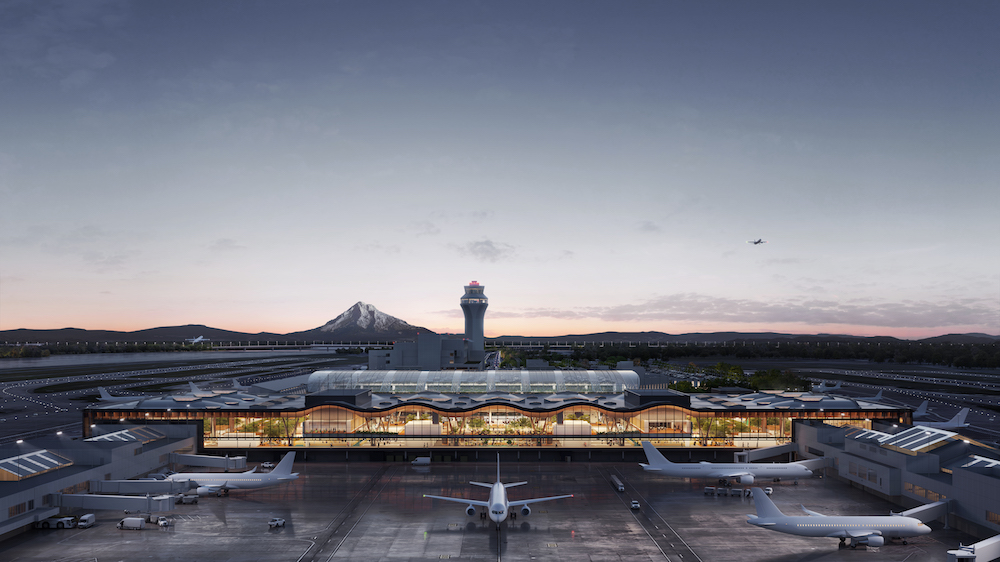
There’s one lush scene everyone will experience at PDX when the new terminal opens in 2025: a park-like environment filled with live trees, understory ferns and dappled rays pouring in from the overhead skylights. Architects call this area the “seam,” because it will mark your pathway from the ticket lobby into the public market and security checkpoints beyond. But this seam is more enchanting than its low-key nickname might imply.
PDX Construction 101: What’s Happening at Your Local Airport, Explained
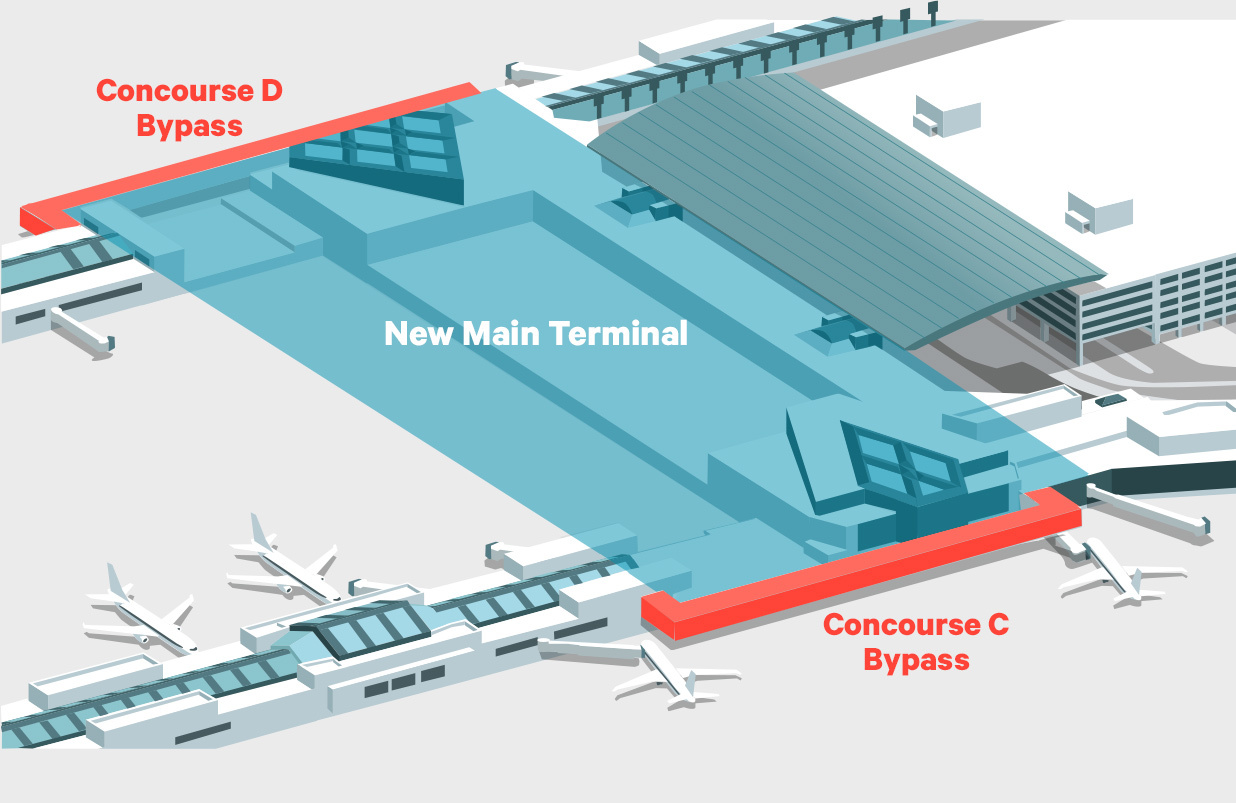
If you’ve visited PDX recently, you might have noticed a few changes — like the fact we’ve removed the ceiling pre-security. Don’t worry: This “industrial chic” aesthetic is only temporary, as we gear up to build a new roof over the airport. And that’s only part of what we have in the works. These changes might leave you with some questions. So we’ve put together this explainer to guide you through the milestones of the key PDX Next projects — including the new main terminal, Concourse B and flexible transportation upgrades.
First Look: New designs for PDX Take Inspiration from the Region
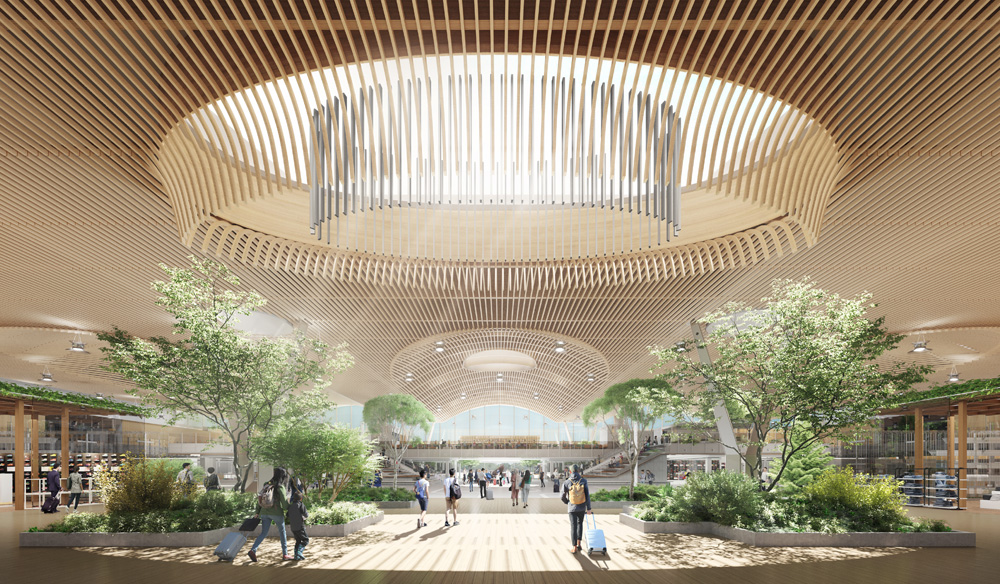
Fast forward to 2025: You’ve just landed at PDX and it’s your first time stepping into the new main terminal, as insiders often call the airport’s central hub. As you glimpse the bright space, you spot details that already feel familiar: Soft daylight filters through the wooden roof, almost like light filtering through a forest canopy. People gather in common areas that look more like city parks. And in almost every corner, you see touches of Oregon’s signature greenery. If you get a little déjà vu, that’s by design. The sight of our region’s landscapes — and the calm it often brings — is a key inspiration for the architects working on the new main terminal.
Say Hello to PDX’s New Concourse B!
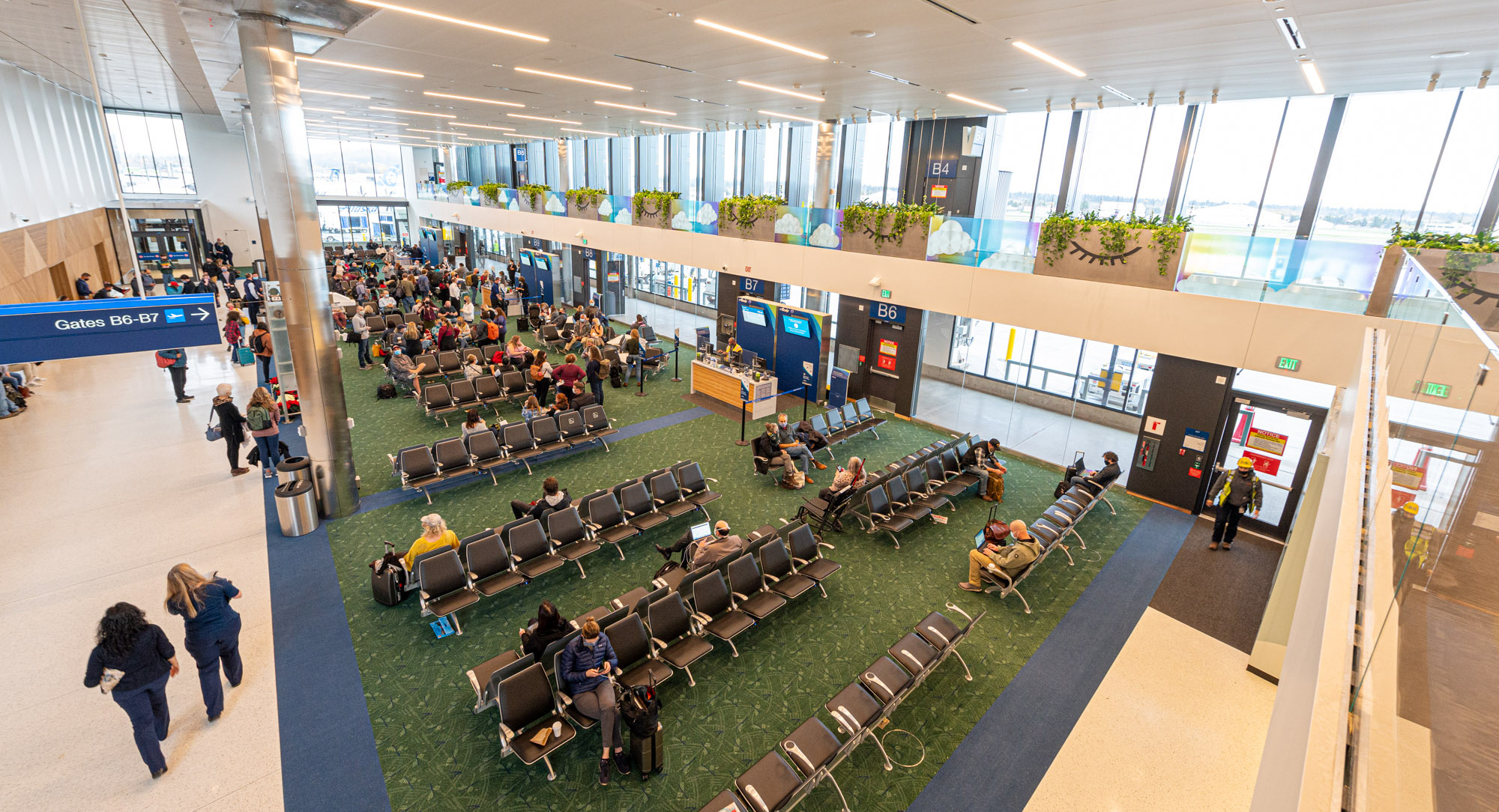
Two years ago, PDX demolished Concourse A to replace it with a bigger, brighter one. This December, we're ready to say hello to Concourse B. Ten new gates for Alaska Airlines and Horizons Air flights. Great views. Some of Portland's best food and drinks. Whether you're flying to Boise or Bend, B is sure to make your trip more comfortable.
Work in Progress: Constructing the Curvy “Cassettes”
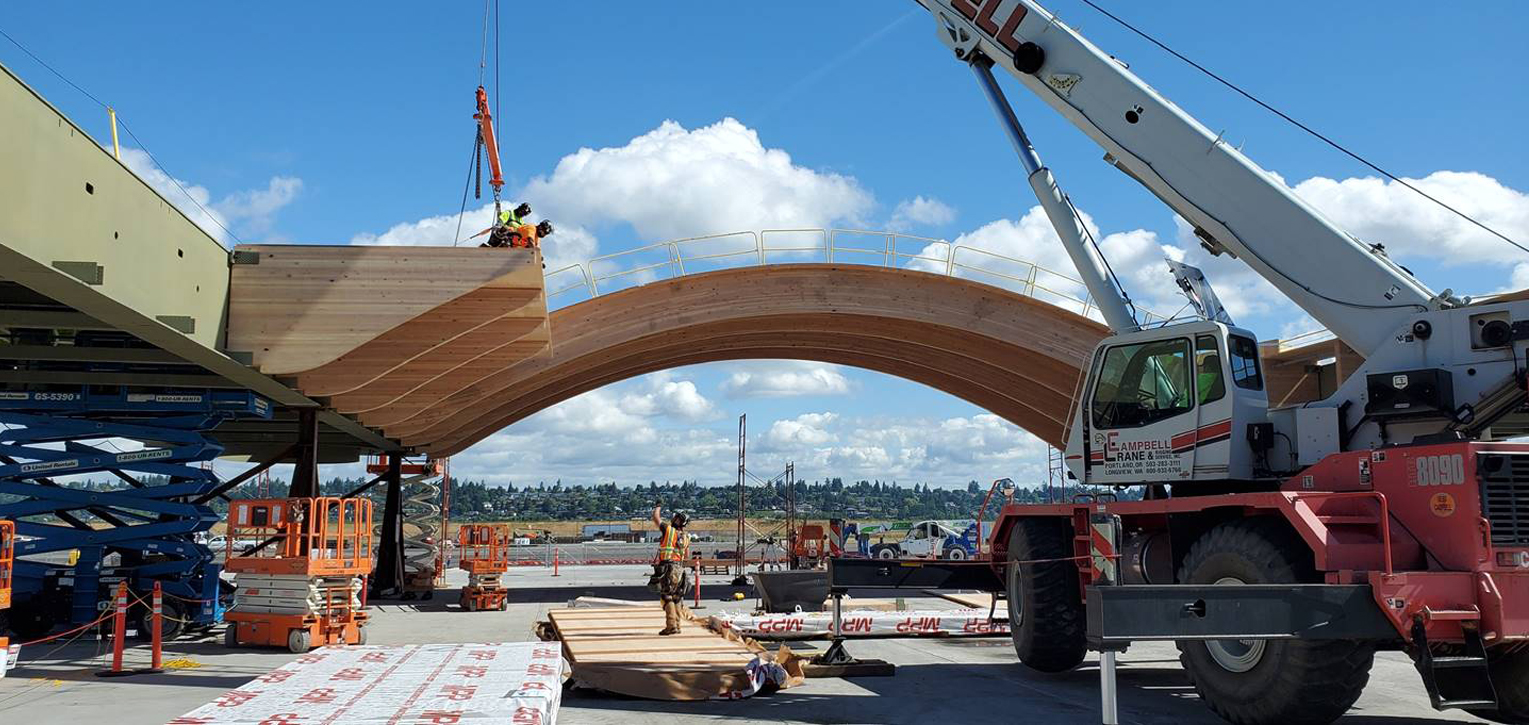
Pssst! Want to see something cool? We’re sharing regular “work in progress” snapshots to show you what we’re up to. Up next: The building blocks for the curvy wooden roof.
Work in Progress: Building the Wooden Roof in Pieces
Pssst! Want to see something cool? We’re sharing regular “work in progress” snapshots to show you what we’re up to. Up next: We're fabricating full-scale roof mockups, which give you a sneak peek into the building process.
PDX Comic: An Everyday Adventure Through Construction Detours
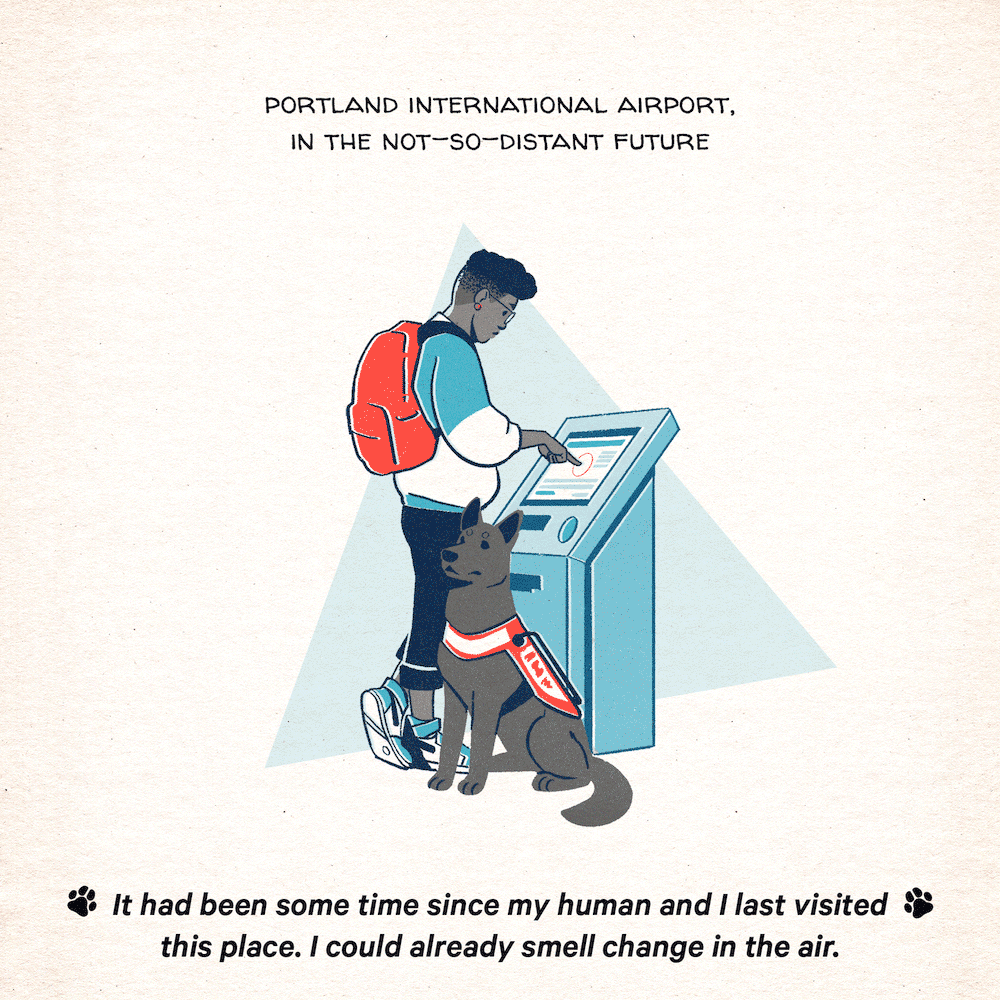
The latest comic from Oregon-based artist Aki Ruiz tells the story of a few travelers making their way through PDX in the not-so-distant future. Scroll on to see how our duo discovers what magic is happening behind the scenes.
Even Engineers Marvel Over the Curves of PDX’s New Roof
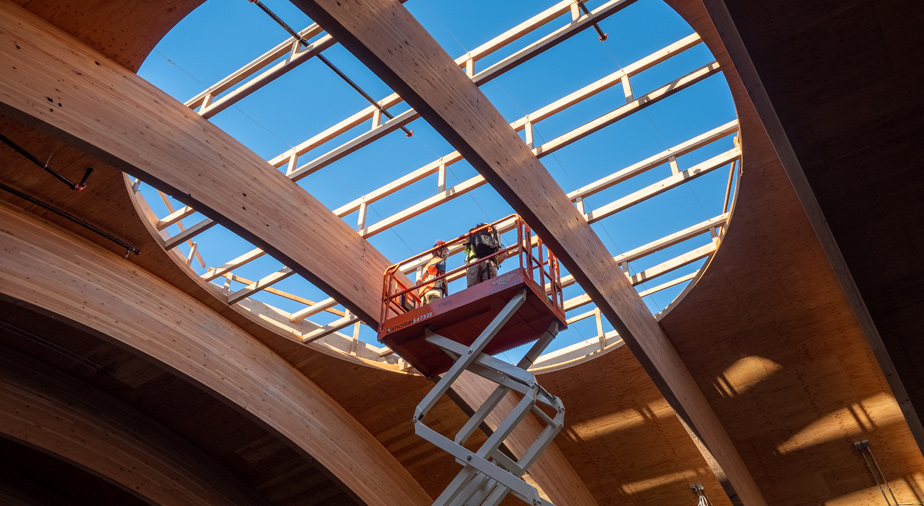
Once the airport's nine-acre roof slides into place over the main terminal next year, what you see may depend on who you are. You, we hope: a roofline you’ll recognize from a distance, with swooping wooden curves and giant round skylights. Every architect, contractor, construction worker, and fabricator who built the roof: a brain-twisting feat of design and engineering.
Work in Progress: Models Show the Future of PDX in Miniature
Before there can be an airport, there must be an airport model. Architectural models are a key tool for studying designs and communicating project visions. So after our first look at the newly unveiled designs for the Portland International Airport, we’re now getting a glimpse of the model built by the architecture firm ZGF.
The Return-to-Travel Challenge: Keeping Travelers Moving Around Airport Construction

Last year, global air travel plunged to its lowest levels in recent history. At PDX, that meant the vast majority of Pacific Northwesterners had not yet noticed the big changes happening at the airport. But now with the “return to travel” on the tips of everyone’s tongues, more people are finally getting a sense of what’s happening.
